the top
8:30am – 12:30pm
LE01
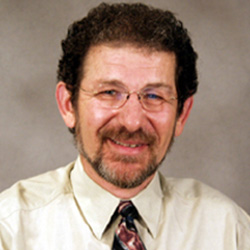
Law and Ethics – Safe Practice: Liability Protection and Risk Management
Steve Frankel, PhD
Room: Grand Peninsula E
All Levels
Description:
The presentation outlines key legal and ethical information pertaining to maintaining clinical records, privacy regulations and confidentiality, and is designed for early career through senior professionals. The program begins with a review of recently enacted or modified laws in the State of California, which have implications for all jurisdictions in the United States. The program then turns to issues concerning record retention from a legal liability viewpoint rather than the simple statements of how long records must be kept, and websites that provide helpful information about liability and risk management for any/all mental health clinicians, and then turns to an analysis of record-keeping requirements. The presentation then reviews situations in which clinicians are involved in the legal system and especially in courts of law, including witness categories. What follows is a review of practice formations, and ways to create and manage mental health practices, including how to cope with reputational problems. The program ends with information about developments for involuntary commitment, internet practice and a review of the best online training for child abuse reporting.
Educational Objectives:
1. List two legal developments in California law that impact child abuse reporting.
2. Identify two major factors governing record retention.
3. State the three types of witness categories that clinicians may be assigned by the legal system.
4. Name at least two categories of practice formation.
5. List at least two legal underpinnings of involuntary hospital commitment.
8:30am – 12:30pm
PC01

Embedding Multiculturalism, Diversity, And Social Justice Principles Into Psychotherapy Practice
Patricia Arredondo
Room: Grand Peninsula F
All Levels
Description:
Culturally responsive and ethical practice in psychotherapy has been advanced for nearly 50 years, evolving from the Civil Rights movement for inclusion and eq. Both the APA and ACA have promulgated standards to inform education and training, research, clinical practice, and organizational behavior, however, there continue to be gaps in the application of said standards. This program will address macro and micro levels of multiculturalism and diversity in psychotherapy training and practice, intersecting Dimensions of Personal Identity, wholistic health, including spirituality, and terminology relevant to inclusive practices. Issues of structural barriers to equitable treatment based on classism, racism, sexism, ableism, ageism, and homophobia will also be discussed as these impact psychological well-being.
Educational Objectives:
1.Identify 3-4 cultural competency statements about one’s professional development.
2. Cite 3-4 cultural competency statements to inform one’s clinical practice.
3. Identify 3-4 organizational behaviors that are barriers to inclusion in an educational/class setting and/or work setting
4. Define social justice principles to guide clinical practice.
5. Explain three reasons why the Dimensions of Personal Identity need to be applied to counseling situations.
6. Cite three attributes of well-being, bolstered by spirituality and multiculturalism.
Presenters:
Patricia Arredondo, EdD, NCC, Licensed Psychologist
José Cervantes, PhD, ABPP, Licensed Psychologist
Colleen Logan, PhD, LPC-S, LMFT, NCC
Karen Westbrooks, PhD, LMFT, LPC
8:30am – 12:30pm
PC02
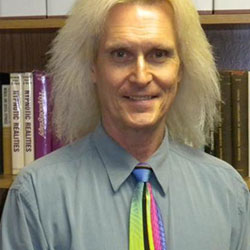
Fundamentals Of Ericksonian Approaches In Clinical Hypnosis
Brent Geary, PhD
Room: Grand Peninsula G
All Levels
Description:
This workshop will provide participants with an introduction to the key concepts and techniques of practice in Ericksonian hypnosis. A brief biography of Erickson’s professional life will provide perspective on the extensive contributions he made to the fields of hypnosis and psychotherapy. Terminology of hypnosis will be explained and various approaches to induction will be described and demonstrated. The process of a typical hypnotic session will be outlined. Considerable attention will be afforded the hypnotic phenomena, the essential mechanisms in hypnotic therapy. Erickson’s landmark concepts of utilization and indirection will be explored with particular focus on the use of therapeutic anecdotes and metaphors.
Educational Objectives:
1. Explain the role of truisms in hypnotic induction.
2. List four hypnotic phenomena.
3. Describe the difference between direct and indirect suggestion.
4. Cite potential considerations in the use of age regression in hypnotic therapy.
5. Differentiate therapeutic anecdotes from metaphors
12:30pm – 2:00pm
Lunch Break

Lunch Break
2:00pm – 4:00pm
LE01

Law and Ethics – Safe Practice Continued…
Steve Frankel, PhD
Room: Grand Peninsula E
All Levels
Description:
The presentation outlines key legal and ethical information pertaining to maintaining clinical records, privacy regulations and confidentiality, and is designed for early career through senior professionals. The program begins with a review of recently enacted or modified laws in the State of California, which have implications for all jurisdictions in the United States. The program then turns to issues concerning record retention from a legal liability viewpoint rather than the simple statements of how long records must be kept, and websites that provide helpful information about liability and risk management for any/all mental health clinicians, and then turns to an analysis of record-keeping requirements. The presentation then reviews situations in which clinicians are involved in the legal system and especially in courts of law, including witness categories. What follows is a review of practice formations, and ways to create and manage mental health practices, including how to cope with reputational problems. The program ends with information about developments for involuntary commitment, internet practice and a review of the best online training for child abuse reporting.
Educational Objectives:
1. List two legal developments in California law that impact child abuse reporting.
2. Identify two major factors governing record retention.
3. State the three types of witness categories that clinicians may be assigned by the legal system.
4. Name at least two categories of practice formation.
5. List at least two legal underpinnings of involuntary hospital commitment.
2:00pm – 4:00pm
PC01

Embedding Multiculturalism Continued…
Patricia Arredondo
Room: Grand Peninsula F
All Levels
Description:
Culturally responsive and ethical practice in psychotherapy has been advanced for nearly 50 years, evolving from the Civil Rights movement for inclusion and eq. Both the APA and ACA have promulgated standards to inform education and training, research, clinical practice, and organizational behavior, however, there continue to be gaps in the application of said standards. This program will address macro and micro levels of multiculturalism and diversity in psychotherapy training and practice, intersecting Dimensions of Personal Identity, wholistic health, including spirituality, and terminology relevant to inclusive practices. Issues of structural barriers to equitable treatment based on classism, racism, sexism, ableism, ageism, and homophobia will also be discussed as these impact psychological well-being.
Educational Objectives:
1.Identify 3-4 cultural competency statements about one’s professional development.
2. Cite 3-4 cultural competency statements to inform one’s clinical practice.
3. Identify 3-4 organizational behaviors that are barriers to inclusion in an educational/class setting and/or work setting
4. Define social justice principles to guide clinical practice.
5. Explain three reasons why the Dimensions of Personal Identity need to be applied to counseling situations.
6. Cite three attributes of well-being, bolstered by spirituality and multiculturalism.
Presenters:
Patricia Arredondo, EdD, NCC, Licensed Psychologist
José Cervantes, PhD, ABPP, Licensed Psychologist
Colleen Logan, PhD, LPC-S, LMFT, NCC
Karen Westbrooks, PhD, LMFT, LPC
2:00pm – 4:00pm
PC02

Fundamentals Of Ericksonian Approaches Continued…
Brent Geary, PhD
Room: Grand Peninsula G
All Levels
Description:
This workshop will provide participants with an introduction to the key concepts and techniques of practice in Ericksonian hypnosis. A brief biography of Erickson’s professional life will provide perspective on the extensive contributions he made to the fields of hypnosis and psychotherapy. Terminology of hypnosis will be explained and various approaches to induction will be described and demonstrated. The process of a typical hypnotic session will be outlined. Considerable attention will be afforded the hypnotic phenomena, the essential mechanisms in hypnotic therapy. Erickson’s landmark concepts of utilization and indirection will be explored with particular focus on the use of therapeutic anecdotes and metaphors.
Educational Objectives:
1. Explain the role of truisms in hypnotic induction.
2. List four hypnotic phenomena.
3. Describe the difference between direct and indirect suggestion.
4. Cite potential considerations in the use of age regression in hypnotic therapy.
5. Differentiate therapeutic anecdotes from metaphors
6:30pm – 7:00pm
CON

Convocation
Location
This session is not for credit.
7:00pm – 8:00pm
K01

Keynote Address 01 – Latinx Immigrant Resilience in the Midst of Change and Challenges
Patricia Arredondo, EdD
Room: Grand Peninsula ABCD
All Levels
Description:
Latinx Immigrants in psychotherapy need to be seen from a strength versus deficit perspective. Across generational differences, there are cultural anchors from the family, spirituality and religion, interdependence, and self-determination that lead to achievements in the midst of adversity. The sociopolitical context and structural barriers to documented and undocumented immigrants need to be recognized as factors of oppression, trauma, and discrimination, yet, Latinx persons persevere for their families, and those they left behind. Because of the Latinx relational orientation, therapists can engage through respectful culture-centered, interpersonal approaches.
Educational Objectives:
1. Discuss Latinx immigrants’ cultural anchors.
2. Cite the stages of the migration process
3. Identify three culture-centered techniques to apply in therapy with Latinx immigrants.
the top
8:30am – 10:00am
SC01
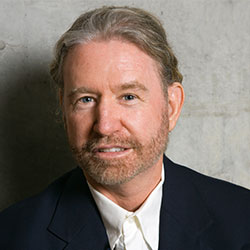
Brief Approaches for Trauma Healing: Navigating Chaos, Complexity and Resiliency
Ronald Alexander, PhD
Room: Grand Peninsula A-D
Description:
This short course will address the rapid treatment of trauma by utilizing Somatic Experiencing, Ericksonian Hypnosis and Mindfulness practices for accessing the unconscious and activating inner resources with SE, mindfulness, and trance. These three unique orientations emphasize a unified mind-body healing approach that appreciates utilization as an orientation that understands the importance of the symptom as a pathway to inner healing. We will review the clinical tracking skills for: orientation, resourcing states, titration, pendulation, containment and the witnessing awareness as well as learning to pace and settle the patient’s nervous system. A step by step model will be taught how to navigate the complexity and chaos of energy wells through containment and resourcing. Participants will learn tools for tracking coherency and creating comfort, safety and resiliency within the body and nervous systems. Neuroscience and Polyvagal theory clinical adaptions for how to work with an activated nervous system and shuttling towards trauma deactivation and integration and settling of experience will be demonstrated. The course will highlight both Milton Erickson’s use of metaphor and rapid trance induction as well as the work of Peter Levine models of Trauma and Healing Vortex states of experiences, including mindfulness practice for framing, re-framing and de-framing the immediate reorganization of transforming somatic-affective experience into new healing rhythms in the body. These methods allow the body to open healthier pathways for rapid new somatic recoveries. We will also emphasize the use of naturalistic hypnotic trance, guided mindfulness practice, and somatic breath tools for generating new therapeutic skills in fostering trauma healing, coherency and Resiliency.
Educational Objectives:
1. Apply rapid and brief resource state skills in the treatment of trauma, pain, and somatic disorders.
2. Utilize Ericksonian trance work and mindfulness meditation to promote utilization to shift trauma and promote mind-body healing.
3. Observe demonstrations in rapid trance inductions highlighting Erickson’s use of metaphor to promote immediate shifts in trauma healing.
4. Practice Somatic Experiencing exercises to access one’s core resources, teach grounding and orientation skills for containment and promoting coherency in the mind-body state.
5. Demonstrate Ericksonian, mindfulness and somatic experiencing methods for tracking the sympathetic and parasympathetic nervous systems for containment, pendulation, release of trauma and the promotion of coherency.
8:30am – 10:00am
SC02
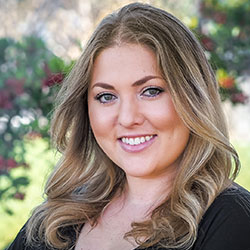
Long-Term Interventions in a Brief Therapy Model for Residential and Intensive Outpatient Drug and Alcohol Addiction Treatment
Julia Alperovich, MS, MFT
Room: Grand Peninsula E-G
Description:
This presentation will introduce a short-term model of treatment incorporating solution-focused, rational emotive behavioral, and systems theory interventions for residential or intensive outpatient drug and alcohol treatment. This approach involves several theoretical orientations and interventions, which have been considered more appropriate for long-term therapy but are also effective for development of insight and improvement of coping skills for a longer lasting result and a more impactful treatment model than the typical cognitive behavioral approach that is used in these settings. The goal of this model is to blend behavior modification techniques with a co-occurring perspective to help patients gain an improved understanding of their addictive behaviors as well as an awareness of their interpersonal patterns. This promotes individual accountability and has greater efficacy in changing personal boundaries and communication than a 12-step model alone. The presentation will include case examples, guidelines and a timeline for treatment, and an overview of the skills that can be gained to ensure a more positive prognosis.
Educational Objectives:
1. Definition of client population and presenting problems which are often not addressed in brief inpatient treatment for drug and alcohol addiction.
2. Demonstration of appropriate use of interventions and treatment model.
3. Increased understanding of the benefits and drawbacks of some of the more commonly used treatment models.
8:30am – 10:00am
SC03
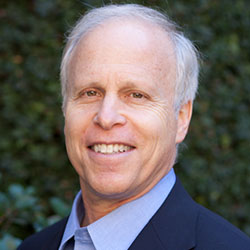
More Important than Hypnosis: Applying David Burns, MD’s, TEAM-CBT Approach to Children and Adolescents
Jeffrey Lazarus, MD
Room: Regency Ballroom
Description:
Do you ever have patients who are resistant in your therapy? Or who are not making the type of progress you’d like and expect? Or who don’t do the homework you assign them? If so, you can learn about an exceptional approach to communicate with them to solve these types of problems.
David Burns, MD, internationally known author of Feeling Good, The New Mood Therapy, is one of the pioneers of cognitive behavioral therapy (CBT). He has developed TEAM therapy (Testing, Empathy, Agenda Setting, and Methods), using new tools, including new forms of communication skills that can be applied to any type of therapy (CBT, psychodynamic, hypnosis, etc.), enhancing results and speeding up the process.
These tools apply to patients with virtually every type of problem you will encounter, including:
1. Mood disorder
2. Relationship problem
3. Habit/Addiction
4. Non-problem
5. Somatic problem
This is the first time the same model that Dr. Burns has been using and teaching for adults will be shown in working with children and adolescents. Although the examples used will be pediatric patients, these same concepts apply to patients of all ages.
Attendees will see a demonstration of Dr. Burns’ “The Magic Dial,” for patients with anxiety.
Unique patient video clips will further enhance the salient points of this workshop.
Educational Objectives:
1. Describe each of the steps of TEAM-CBT therapy
a. Testing
b. Empathy
c. Agenda setting
d. Methods
2. Discuss an approach for patients with outcome resistance and process resistance
3. Discuss “The Magic Dial” for patients with anxiety
8:30am – 10:00am
SC04

The 9 Logics Beneath the Brief Therapy Interventions
Flavio Cannistra, MS, PsyD
Room: Cypress C
Description:
Hundreds of brief therapy techniques exist. In this presentation, I will identify the 9 underlying logics, together with methodology and examples. The 9 logics are:
1. Direct block of attempted solution: techniques which call in a more or less direct way for the patient to stop a certain behavior in order to block the attempted solution.
2. Create aversion: techniques aimed at creating in the patient an aversion towards something, such as to a behavior, or a form of interaction or relationship, etc.
3. Creating awareness: techniques are meant to help the client become aware themself of something, that is the wrong behavior or of their abilities and resources.
4. Create from nothing: techniques that are designed to create or amplify resources, skills and abilities in the client, to introduce changes in their perceptions and behaviors.
5. Increase to reduce: within this category are a large number of paradoxical techniques.
6. Small changes (or small violations): techniques aimed at solving a problem by implementing small, often incremental, changes.
7. Strengthen the relationship: essentially designed to strengthen the therapeutic alliance, this is the only one of the nine logics that is not intended to directly produce a therapeutic result.
8. Shift the focus: many techniques can be designed to shift the patient’s attention.
9. Vent and process: techniques that aim to vent and/or further process a particular lived experience.
We need to remember that a technique is but an instrument obeying the logic of intervention: once the logic is identified, the therapist can derive and produce appropriate techniques.
Educational Objectives:
1. Identify 9 logics underlying different brief therapy interventions.
2. Demonstrate 2 or more interventions that can be subsumed under each logic.
3. Demonstrate how to integrate the “9 logics” process into participants’ own clinical practice.
8:30am – 10:00am
SC05

The Art of Creating a Magical Session
Paul Leslie, EdD
Room: Sand Pebble D-E
Description:
In this training you will learn the factors which lead to creating alive and inspired therapy sessions regardless of theoretical orientation. Drawing from such diverse sources as indigenous wisdom traditions and modern psychotherapy approaches, this training will demonstrate how embracing improvisation and utilization can revitalize and energize therapy sessions. By understanding how circular interaction, expectancy, humor, and imaginative performance can assist clients in obtaining treatment goals, one can learn to create effective and “magical” experiences in therapy.
Educational Objectives:
1. Describe three processes in opening up interaction in counseling sessions
2. Discuss the use of creative therapeutic applications in diverse settings
3. Describe how to create attuned, synergistic relationships that are unique to each client.
8:30am – 10:00am
SC06
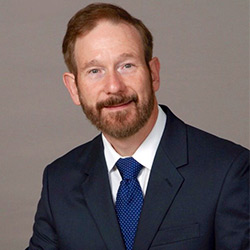
Brief Effective Interventions for Chronic Pain
James Keyes, PhD
Room: Sand Pebble A-C
Description:
As a consultant, psychotherapists tell me “Chronic Pain is such a complex issue; I’m not sure where to start with a patient in my office.” Some Ericksonian presenters have offered approaches touted as “alternative approaches to pain management,” while many patients who present to a therapy practice have not been exposed to more standard mental health approaches. This seminar provides an overview of a) a conceptual framework for the treatment of chronic pain using what are touted as “evidenced based approaches” but integrated in different areas of functioning – creating a multi-system level of intervention; b) would review specific protocols for such interventions as behavioral activation; behavior modification (pacing / reinforcements); sleep hygiene and sleep protocols; simple to more complex relaxation (and self-hypnosis) exercises; use of mindfulness; changing / challenging negative thoughts (expectations); what psychotherapists need to know about medications in chronic pain; review of family systems issues affecting pain; need for review of basic communication strategies; reinforcement of boundaries, limits and self-care; ideas for re-establishing community; etc. Perhaps most important, this presentation would include how therapists can listen for where the patient needs (or wants) to start.
Educational Objectives:
1. Describe a framework with which to evaluate a patient’s functioning who complains of chronic pain.
2. Create a brief treatment plan with the patient using evidence based approaches.
3. Review and practice specific approaches used to assist in brief interventions for chronic pain management.
8:30am – 10:00am
SC07

Intuition: The Inner Game of Brief Therapy
Bette Freedson, MSW
Room: Cypress B
Description:
The Inner Game of Brief Therapy will introduce the ACE schema, a three-step model for Accepting, Cultivating and Exploring intuition, described as wise guidance of the inner mind. We will discuss how development of these three features of the ACE schema can enrich and enliven the artistry of the therapist’s strategic repertoire and lead to effective clinical results.
Through didactics, case examples and exercises, participants will explore intuition as an ego state, characterized in the clinical setting by therapists’ readiness to be inspired by and utilize mini-ideas and images from their ongoing mental flow in conjunction with material from the patient’s personal narrative.
Attendees will experience firsthand the way such an approach facilitates empathic resonance, elicits dynamic experiential moments of insight via clairsentience, clairaudience and clairvoyance, and potentiates emotional healing.
Special focus will be placed on intuition as an evocative approach with phenomenology akin to that of hypnotic trance. We will discuss the way utilizing an intuitive approach can readily reframe distorted cognitions into new metaphors, shift realizations from problems to solutions and elicit absorption of unconscious resources into adaptive Wholeness and a felt-sense of solid Self.
Educational Objectives:
1. Identify at least two features of ACE, a three-step schema for developing Intuition.
2. Describe one way in which the phenomenology of an intuitive approach is akin to the phenomenology of hypnotic trance.
3. Given an individual patient, intuitively utilize a mini-idea in conjunction with material from the client’s narrative to create a dynamic experiential moment.
8:30am – 10:00am
SC08
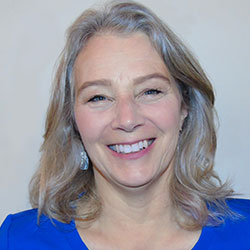
Building Bridges of Understanding with Religion and Culture through Intercultural Resiliency
Joanne Ginter, MA
Room: Cypress A
Description:
Due to the changing multicultural landscape of their communities, therapists are having to address greater diversity within client populations, including a broader spectrum of religious and cultural practices. While there is increased acknowledgement for the development for culturally fused counseling, many therapists continue to believe that religion specifically should be excluded from therapy. This exclusion continues to occur despite the significant growth in the psychological study of religion and APA resolutions which encourage non-prejudicial or neutral positions when addressing religion or cultural practices in clients and the promotion of respectful collaboration with religious communities.
This workshop briefly outlines the historically sticky relationship between psychology and religion then emphasizes ways culture and religion can be integrated into the therapeutic discourse through the promotion of intercultural resiliency. Interculturalism allows for relationship building and learning from each other while taking the therapist deeper than multicultural or cross-cultural communication. Similarly, resiliency as a healing process allows for creating new meanings to unfortunate life events based on developing the self through mentorship and community. The resiliency process interfaces well with interculturalism as all resources are respected and included. Intercultural resiliency recognizes cultural and religious diversity to guide therapists to becoming more pluralistic in practice.
Educational Objectives:
1. Define the underlying ideals of intercultural resiliency and the components of culturally infused counseling
2. Identify ways the building blocks of resiliency and the resiliency process can be fostered across diverse religions and cultures
3. Demonstrate ways to self-reflect on one’s worldview and how to become more diversified and pluralist in practice
10:15am – 11:45am
SC09

Trauma, Young People and the Power They Give the Internet. Using Hypnotherapy and Somatic Experiencing to Heal, Access Resource States and Charge Up a Strong Inner Selfie
Tobi Goldfus, MSW
Room: Grand Peninsula A-D
Description:
Self-esteem for heavy young users of Social Media (often the norm today), is often linked with how they are “perceived” or “liked” or “followed”. Non-response or delayed response to a post, negative feedback or the sudden disappearing act of an online based “relationship” can have damaging and traumatic effects on fragile or developing egos. Acting out (online and in real life), increased depression, agitation, anxiety, and isolation are often the result. This workshop will examine the perimeters of cyber trust and cyber sincerity and offer assessment tools such as the Social Media Assessment Form and the Self-Report of Social Media Traumatic Experience Form to move into more informed, attuned and effective positions of intervention. Discrimination skills to reduce the emotional impact of the trauma using hypnotherapy and somatic experiencing techniques while building the observer self will be presented. This will include the Inner Selfie Technique, down regulation exercises, short trance construction and somatic body release. Positive Social Media experiences/use and the integration of therapeutic apps and support that contribute to positive mastery of developmental tasks and ego states online will be presented. This workshop will include videos, experiential exercises, case examples and trance.
Educational Objectives:
1. Describe how to use two assessment tools presented.
2. Demonstrate two ways to lower the impact of the online trauma.
3. Demonstrate the Inner Selfie Technique and integrate an online resource to build and access resource states.
10:15am – 11:45am
SC10

Depression and Obesity: How Can Hypnotherapeutic Short-Term Interventions Help?
Margot Götte-El Fartoukh, Dr. phil.
Room: Grand Peninsula E-G
Description:
The interaction of depression and weight problems is complex. There are people with strong overweight showing no visible depressive symptoms despite considerable stress. Likewise, there are people who gain excess weight from emotional overeating in an episode of depression or people whose helplessness was increased by repeated failed attempts to lose weight.
The question is: How can hypnotherapeutic short-term interventions help with the complex interplay of depression and overweight?
The control of body weight is largely remote instinctively. When conscious efforts go nowhere, hypnotherapeutic strategies can open new possibilities. Presented is a model of hypnotherapeutic strategies of weight regulation introduced on the M.E.G. Congress 2018 in Bad Kissingen (Germany) based on the following questions:
• Which positive functions does the current (over)weight fulfill?
• How can the internal desired value be positively influenced and the damaged self-esteem be strengthened?
• How to negotiate with the subconscious interests responsible for the overweight?
• How can patterns, which stand in the way of goal achievement, be interrupted?
• Which inner pictures can support the way to the desired weight?
Educational Objectives:
1. Discuss meaningful weight goals with their clients and explore which other goals need to be realized so that the inner desired value of the weight can change,
2. List the critical points that currently prevent better set point setting,
3. Describe appropriate short-term interventions (for example, assessment of disease gain, target progression, age regression, negotiation with inner saboteurs, use of direct and indirect post-hypnotic suggestions), and tailor them to the goal of weight reduction.
10:15am – 11:45am
SC11
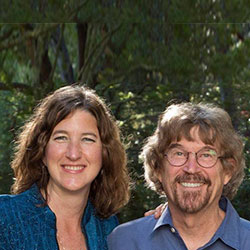
New Brief Therapy Process – How to Quickly Release Your Negative Thought Patterns and Limiting Beliefs with Dynamic Spin Release™
Tim Hallbom, MSW and Kris Hallbom
Room: Regency Ballroom
Description:
Created by Tim and Kris Hallbom, Dynamic Spin Release™ is a powerful set of processes that allows users to quickly release their negative thought patterns and emotions, limiting beliefs and physical pain – in just one brief session.
Dynamic Spin Release™ (DSR) was created using ideas delineated from the world famous psychiatrists, Carl Jung and Milton Erickson – and draws heavily from the psychology of metaphors, NLP, Ericksonian Hypnosis and creative visualization…
Just as the earth rotates around the sun, and the moon circles around the earth, your thoughts, feelings and beliefs have a certain spin quality to them as well. DSR powerfully blends the universal archetype of spin with the psychology of metaphors – and involves several techniques that can be applied to almost any problem state or negative thought pattern. These intuitive processes are practical, easy to use with yourself and others, and work well with children!
The Hallbom’s have been developing this powerful methodology since 2008 in their private coaching practices; and have been teaching it throughout Europe, Asia, Australia and North America ever since. In 2009, they were the Keynote Speakers at the International NLP Conference in London where they first introduced DSR to the worldwide NLP Community.
Educational Objectives:
1. Describe how to easily shift negative thought patterns and limiting beliefs in yourself and others in a matter minutes.
2. Demonstrate how to quickly relieve the pain and discomfort of physical ailments such as headaches, colds or chronic injuries.
3. Define and demonstrate the role that metaphors, memes and archetypes play in transforming your thoughts, feelings and beliefs.
10:15am – 11:45am
SC12

(Almost) Everything I Know in Psychotherapy I Learned in Acting School
Richard Hill, MA, Med, MBMSc
Room: Cypress B
Description:
This experiential, creative and self-exploratory mini-workshop expands the central features of therapy laid out in The Practitioner’s Guide to Mirroring Hands – Client-Responsiveness and Sensitive Observation. Ernest Rossi states that Erickson was a Genius of Observation rather than a genius of manipulation. Being sensitively aware to both verbal and non-verbal communication, while developing a natural responsiveness to the client, is the essence of utilization. These skills are fundamental to the facilitation of effective brief therapy. When Rossi and Erickson discussed being a better therapist in 1980, Rossi concluded, “We have to find out how to read faces… inflections of words, the minimal cues that patient’s give us about their underlying problem?” Erickson replied, “Yes.” Rossi wondered, “But, there is no school for face reading, posture reading, voice inflection reading – except the school of life.” In the Hill-Rossi Conversations of 2016, we continued to discuss this gap in a therapist’s learning. When I explained I learned this in acting school and during my 25 years as a professional actor, before shifting to psychotherapy, Rossi confessed that he studied acting with Lee Strasberg to enhance his sensitive observation and improvised responsiveness. And, so was born the concept for this workshop and new publication, (Almost) Everything I Know in Psychotherapy, I Learned in Acting School.
Educational Objectives:
1. Define and demonstrate Client-Responsiveness
2. Define and demonstrate Sensitive Observation
3. List the ways to engage in Deliberate Practice
10:15am – 11:45am
SC13
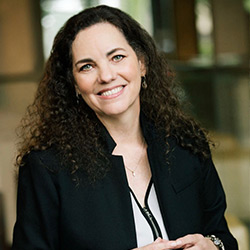
Untethering from Cognitive Distortions with Acceptance and Integration Training
Melanie McGhee, MSW
Room: Cypress A
Description:
Our clients search for ways to untangle from the pain caused by the stories they tell themselves. They want relief from the ruminative tendencies that entangle them and distort their perspective.
After a brief exploration of the six principles of Acceptance and Integration Training, participants will learn a simple method for helping clients recognize distorted thoughts AS distorted. They will learn an unassuming but profound integration technique for addressing cognitive distortions. This method strategically uses the fundamental polarities of good and bad to walk out of the pain of distorted thinking. Most people find the experience to be a bit funny and mysterious, leaving them with a sense of ease when considering the previous painful thought.
Liberated from arguing with or observing the thought, most feel a distinct cognitive clarity. Choices made from such clarity tend to be more conscious and in alignment with our clients’ highest, truest self. Moreover, they will come to understand the liberating power of conscious clarity.
Blending presentation with case studies, demonstration, Q/A and participatory learning activities, practitioners will leave having experienced a model and method for helping people untangle from painful distorted thoughts while supporting them in waking up to higher states of consciousness.
Educational Objectives:
1. Identify 3 principles of Acceptance and Integration Training.
2. Demonstrate a technique for breaking free from cognitive distortions.
10:15am – 11:45am
SC14
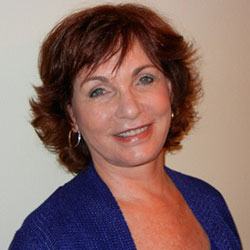
Anxious Children and Teens: Solution-based Strategies to Promote Self-Regulation, a Growth Mindset, and Psychological Resilience
Pamela Kaiser, PhD
Room: Sand Pebble D-E
Description:
Children and teens experiencing clinical anxiety show a pattern of difficulties in discrimination (appraisal) and self-regulation. Many exhibit a cycle of intolerance of uncertainty, chronic fear of failure, and underestimation of their abilities, talents and intelligence (i.e. a fixed mindset). Changing to a more adaptive pattern of accurate appraisal (discrimination) of threat and risk, hardier self-regulation skills to control worry, fear, anxiety and avoidance, and a growth mindset can produce new patterns in thinking, feeling, and acting that foster psychological resilience.
Drawing from a combination of empirically-based, brief, solution-oriented interventions, this session emphasizes the use of practical strategies that actively involve motivated students to learn and apply skills which create new possibilities in their confidence and competence to change the pattern of anxiety, worry and fears.
Utilizing patient video vignettes and fun, pragmatic exercises, clinicians will gain familiarity in how to target specific, therapeutic goals and in how to consider deliberate, experiential, integrative strategies (utilization, clinical hypnosis, biofeedback, mindfulness, exposure therapy, relaxation techniques [i.e. breath retraining], and other techniques) when designing an interactive plan that maximize students’ engagement and readiness for durable change to strengthen self-regulation, a growth mindset and psychological resilience.
Educational Objectives:
1. Identify the primary underlying patterns of anxious youth’s difficulties in discrimination (appraisal), self- regulation, and fixed mindset.
2. List two possible specific, therapeutic goals for interventions with anxious youth
3. Explain the value of four integrative, interactive, and experiential strategies to consider when designing an intervention plan for anxious youth
10:15am – 11:45am
SC15

Utilizing Dreamwork in Psychotherapy
Bruce Fordham, MA, CMHC
Room: Cypress C
Description:
For years the mystery of dreams and interpretation of them has elicited a wide variety of opinions from providers of care in the Mental Health field. This workshop will provide a basic understanding of how to utilize dreamwork in psychotherapy, thereby providing an excellent alternative for patient care – especially when a patient’s defenses are strong. In addition to real life examples that demonstrate the power of the subconscious and utilizing dream images, other concepts taught will be incubating dream recall, six basic hints for dreamwork (as put forth by Jeremy Taylor), uses and types of dreams, lucid dreaming, and how to effectively help a patient “unpack” a dream. Further topics for discussion will be the language of the conscious vs. the subconscious mind, elements of running a dreamwork group, and drugs and dreams.
Educational Objectives:
1. List the 6 basic elements of effective dreamwork
2. Define the differences between the language of the conscious and subconscious minds
3. Demonstrate how to help a patient “unpack” his or her dream.
10:15am – 11:45am
SC16
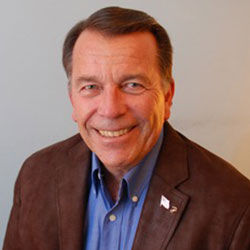
Being Brief with EMDR
Roy Kiessling, MSW
Room: Sand Pebble A-C
Description:
EMDR is known to be an effective and efficient treatment intervention. One, however, that often is limited to long-term clients because of most commonly known treatment planning approach coupled with EMDR’s unrestricted application of bilateral stimulation, i.e., eye movements, tapping, etc.. EMDR may, however, be structured to work within a brief treatment environment. This is accomplished by organizing a treatment plan around the client’s core beliefs and applying variable speed processing, i.e. EMDR, EMDr, EMD. This workshop will introduce participants to a belief focused approach to treatment planning and the techniques used in EMD, EMDr, and EMDR
Educational Objectives:
1. Demonstrate a belief focused approach to treatment planning
2. Discuss the different techniques used by the three processing modalities, EMDR, EMDr, and EMDR
11:45am – 1:15pm
Lunch Break

Lunch Break
1:15pm – 2:45pm
SC17
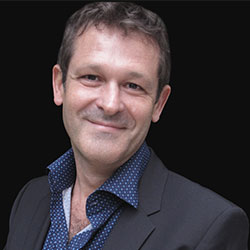
Hypnotic Scaling, a Brief Self-Help Autohypnotic Technique to Cure Anxiety, Depression, Burn-Out, Stress, Psychosomatic Diseases and low Self- Esteem
Paul Koeck, MD
Room: Cypress C
Description:
Hypnotic Scaling an Ericksonian Solution Focused Self-Hypnotic technique to resolve any stress, anxiety, depression or other negative emotion
This is a workshop with live Hypnotic Scaling clinical demonstration and practical exercises!
Hypnotic Scaling is a simple Ericksonian & Solution Focused self-hypnotic technique, developed by Paul Koeck, MD to help your client self-control and resolve any Stress, Anxiety, Depression or other negative emotions. You will be able to teach your client to freely choose where (s)he wants to be at a scale from 0 to 10 at any moment or in any context using (Self) Hypnotic Scaling.
With Hypnotic Scaling your patient will:
1. Gain (rational AND emotional) insight in the micro dynamics of his problem pattern AND solution pattern
2. Be able to choose freely how much (s)he wants to move up or down on the solution scale
3. Be able to condition himself/herself on specific moments (depressive moods, anxiety, panic, stress, job interview, business meetings, press interviews, dating a (wo)man, …)
4. Have experienced hypnotically that he/she can change feelings, thoughts and behaviors within less that 30 minutes while the ability of change becomes undeniable after this first session, because it has happened now: you co-constructed together a new exception !!!
5. Feel more in charge of his/her life, emotions, thoughts, behaviors or habits: the locus of control is in his hands now
Educational Objectives:
1. Describe how hypnotic scaling can help your clients discover multiple unconscious resources
2. Discuss how to do the hypnotic scaling and teach the client self-hypnotic scaling
3. Given a patient, demonstrate how easily they can move themselves on their scales rapidly
1:15pm – 2:45pm
SC18
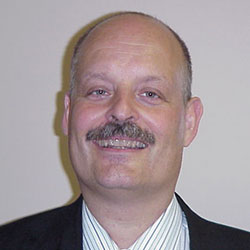
Utilizing Erickson Core Competencies for Effective Clinical Supervision
Dale Bertram, PhD / Mike Rankin, LMFT
Room: Cypress B
Description:
Clinical supervision is an important aspect of developing competent therapists. Within the last year, the Milton Erickson Foundation has developed Core Competencies for Ericksonian Therapy. Supervisors who work with Ericksonian therapists-in-training must have ways to assess and install these competencies within those trainees seeking to become competent Ericksonian therapists. Just like the AAMFT has developed core competencies for MFTs in training, the Ericksonian competencies serve as a more focused guide for Ericksonian work. This workshop will first introduce the competencies which were published in 2017 and then discuss the assessment of these competencies within therapists-in-training. This will be followed by the main portion of the presentation which relates to instilling these competencies within trainees, with an emphasis upon utilizing the areas of strength as a way of building those competencies which are lacking. The co-presenters will offer numerous examples from their work in supervision in how supervisors might come alongside their trainees to help them develop their abilities to work as therapists. The presenters will also offer examples from Erickson’s work.
Educational Objectives:
1. Discuss the structure for assessing Ericksonian Core Competencies in therapist-in-training.
2. Identify the structure for helping to instill and strengthen the core competencies within Ericksonian therapists-in-training.
3. Discuss how to utilize what supervisees bring to sessions in helping them create positive changes.
1:15pm – 2:45pm
SC19
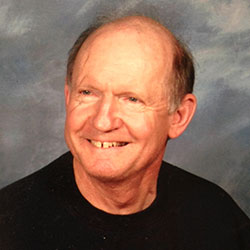
Brief Therapy and Solution Based Approaches to Meditation and Working with Couples and Families in Conflict
George Ferrick, MA, STL
Room: Cypress A
Description:
During 32 years of mediating, and coordinating and providing training for court connected child custody mediators throughout California, I was constantly on the lookout for what I could do to increase effectiveness and positive outcomes. Though mediation is not therapy, there are therapeutic moments. In psychotherapy, especially with couples or family, there may be mediation moments. Brief mediation can be incorporated as a therapist helps parties address issues, couples in conflict, teens and parents, (e.g. mediating over screen use, cf. Screenagers). This workshop will describe strategies and approaches adapted from brief and solution focused therapy. These resources include: Virginia Satir, NLP, The Mental Research Institute of Palo Alto, Narrative therapy, Insoo Kim Berg & brief solution- oriented interview techniques, Milton Erickson & Ericksonian approaches, Gregory Bateson, and others. These enhanced mediation with creative ways to set a tone and reduce anxiety and resistance; to give voice to participants while getting to the heart of the matter; to unlock narrow positions, break through impasses, move to broader viewpoints, and co-create solutions. This workshop may confirm, suggest or inspire additional approaches to add to your skill box.
Educational Objectives:
1. Demonstrate how to set a tone at the beginning of mediation/brief psychotherapy.
2. Illustrate approaches for eliciting movement and flexibility in situations of impasse.
3. Present approaches for fostering empowerment and mutual recognition in conflicted situations.
1:15pm – 2:45pm
SC20

Treating Anxiety in a Cup of Tea
Wei Kai Hung, MED
Room: Sand Pebble A-C
Description:
Alchemy is about transformation process (Linear). Taoism is about going with flow (Circular). Ericksonian is about utilization and experiential therapy (Infinite Possibilities). This experiential workshop will utilize the best of eastern and western philosophical concepts to treat anxiety effective and efficiently. In this workshop we will learn how your conscious mind (upstairs) and your unconscious mind (downstairs) can be activated at the same time and provide the ever-changing solution for treating anxiety within a cup of tea time. You will:
1. Experiencing an Ericksonian Tai-Chi trance.
2. Understanding Alchemy, Taoism, and Ericksonian in both conscious and unconscious levels.
3. Developing your unique Way (Tao) to treat anxiety.
4. Learning exercises that help you to be “in the therapist’s zone” and transform anxiety energy into golden insight.
Conscious mind (upstairs) is 100% focus and concentrated and unconscious mind (downstairs) is 100% relaxed and go with flow. Allowing these two states exist at the same time, and we can create evolving solution to treat anxiety in no time.
Educational Objectives:
1. Demonstrate and create a Tao state that can be creative and beneficial to therapy sessions.
2. Integrate and utilize concepts of Alchemy, Taoism, and Ericksonian to treat anxiety.
3. Describe 2 therapeutic techniques that are developed through Taoism and Ericksonian.
1:15pm – 2:45pm
SC21

Using Telehealth to Deliver Brief Therapy Interventions in Infant Mental Health
Dhara Meghani, PhD / Paulina Barahona, MS
Room: Sand Pebble D-E
Description:
Even in the most resourceful and resilient families, the transition to parenthood can present individual, relational, and contextual stressors that can compromise healthy trajectories of development. Whereas the crisis(es) may be transient and evolve often, it can still create significant concern among new parents. How can families be provided with more effective and efficient care in the transition to parenthood when they most need support? Further, how can clinicians account for situations in which the first session may be the last? This presentation discusses a psychotherapy approach that attempts to address these issues through a telehealth application of Brief Therapy principles.
Parentline is a telehealth service developed by psychologists at University of San Francisco for families with children birth to three. Parentline counselors empathically apply solution-focused yet flexible interventions when responding to developmental, psychosocial, and postpartum concerns via phone, e-mail, and video conferencing modalities. Presenters will detail this protocol and its integration with the delivery of focused, skill-based interventions, which research indicates is especially supportive for new parents. Pilot study results of the protocol, which is hypothesized to increase parenting confidence, decrease anxiety and depressive symptoms, and improve perceptions of support in the first six months postpartum, will be shared.
Educational Objectives:
1. Identify and critique how theoretical and practical foundations of Brief Therapy have informed the Parentline intervention protocol;
2. Demonstrate how specific Brief Therapy techniques can be applied to target symptoms of postpartum depression, anxiety, and stress;
3. Identify how Brief Therapy techniques can be successfully delivered via telehealth and examine whether this is a modality they can adapt for their own use.
1:15pm – 2:45pm
SC22

Priming: The Hidden Key to Successful Therapeutic Outcomes
Clifton Mitchell, PhD
Room: Grand Peninsula A-D
Description:
Research has confirmed that we are controlled by an unconscious behavioral guidance system more than previously conceived (Bargh & Chartrand, 1999). Further, once covertly activated, unconscious goals are just as powerful as or more powerful than conscious goals. To the surprise of many, goals do not require an act of will to be acquired. These findings confirm that the techniques of Erickson that form the foundation of Brief Therapy are validated by the priming research of the last 20 years. This all suggests that the hidden key to effective therapy may be the meticulous and artful use of semantic priming in the therapeutic dialogue.
This presentation will introduce participants to the concept of priming, review selected research, and demonstrate its implications in resolving therapeutic roadblocks and creating therapeutic movement. Implications relative to the management of resistance will be a predominant theme. Ultimately, attendees will learn what priming is, the theory behind what occurs in the brain when priming occurs, and how to incorporate priming into the therapeutic dialogue to minimize resistance and create movement. An added bonus will be a discussion on how to incorporate the same scientific principles into your personal life for self-improvement and habit control. The ideas and methods presented are readily integrated into all theoretical approaches and client problems.
Educational Objectives:
1. Define what priming is and describe how and why it has such a
significant impact on mental processing.
2. Describe and incorporate priming principles into the therapeutic dialogue in order to
circumvent resistance and increase the impact of the therapeutic dialogue.
1:15pm – 2:45pm
SC23
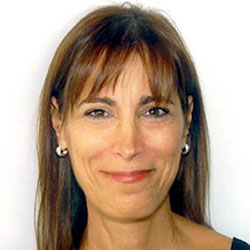
An Introduction to Brainspotting: A Revolutionary Therapy for Rapid and Effective Change
Sue Pinco, PhD
Room: Regency Ballroom
Description:
Brainspotting is a powerful tool that allows you to circumvent many of the frustrating and challenging issues that frequently impede efforts to help children, teens and adults. By engaging your clients in this active and creative process which doesn’t require them to talk about their problems, Brainspotting allows the counselor and client to work together to amplify the client’s innate ability to heal, grow and change, often with astounding speed.
This seminar will review the basic elements of Brainspotting and demonstrate how they can be used to enhance resilience and facilitate healing. Experiential exercises will be utilized to enhance your learning and facilitate your exploration of how you might begin to integrate this powerful new tool into your work.
Educational Objectives:
1. Articulate the basic Brainspotting set up
2. Differentiate between inside and outside window and gazespotting
3. Articulate how to introduce Brainspotting to children, teens and adults and engage them in the process.
1:15pm – 2:45pm
SC24
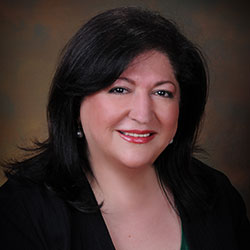
Bridging the Gap Between Clinicians’ Barriers and Effective Communication in Cross-Cultural Sexual Health-Care: Sexuality Taboos, Expression, and Identity
Mitra Rashidian, PhD, LMFT, ACS
Room: Grand Peninsula E-G
Description:
Human sexuality as a bio-psycho-social phenomenon explores various forms of sexual values, attitudes and expressions. In many cultures, discussion of sexuality is taboo. Our studies indicate that many members of first and second-generation immigrant ethnic families in the USA struggle with repressive sexual attitudes, creating psychological stress and inhibitions. Findings also suggest that both clinicians of main stream and of sub-populations experience certain barriers and attitudes that may prohibit them from feeling comfortable bringing up the subject of sexuality with their clients. Most healthcare practitioners will be working with diverse sexual concerns at some time during their professional lives. Therefore, this awareness is essential for providing effective sexual health care and well-being. In this workshop, clinicians’ level of comfort, barriers, and attitudes when talking about sexuality will be highlighted, along with useful strategies to provide better engagement with their clients. Additional strategies used to build upon a person’s individual strengths to assist them in overcoming cultural and personal sexual imprints are offered. Clinical implications for the policy, practice, research and training of practicing physicians, psychotherapists, interns, and MFT graduates are discussed.
Educational Objectives:
1. Describe the various barriers to sexual health care among both the main stream and sub-population clinicians.
2. Identify three communication strategies among clinicians to facilitate effective cross-cultural sexual health care.
3. Apply two brief therapy interventions suitable for treating sexuality related stress among diverse clients.
3:00pm – 4:30pm
SC25
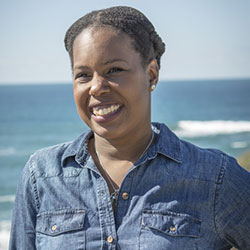
Engaging Parents: A Clinician’s Roadmap to Empowering Parents and Creating Change in Families
Mercedes Samudio, MSW
Room: Cypress C
Description:
Many clinicians know to create lasting therapeutic change in a family, they must get buy-in from the parents, but engaging parents in a therapeutic setting can be challenging. Even experienced clinicians sometimes feel they are fighting a losing battle when working with parents who are resistant. Learning to work with parents more effectively increases therapeutic success, decreases cancellations and early termination, and lays the foundation for lasting change in a family.
In this training, the presenter will focus on what it means to work effectively with resistant parents and keep them engaged during the therapeutic process. We’ll explore the role a parent plays in a family’s ability to change, successfully maintain those changes, and what strategies clinicians can use to bypass parental resistance to develop a therapeutic alliance that empowers parents and heals families.
Experiential anecdotes will also be used to showcase the importance of a parent’s role in the family system. This will demonstrate how clinicians can convey the importance of the family’s reliance on the strength of a confident parent, especially during times of increased stress and emotional upheaval. Attendees will learn strategies to engage parents, overcome therapeutic barriers, and manage common family system challenges to promote successful healing.
Educational Objectives:
1. Define the process of parental identity development, parental defense mechanisms, and parent shame
2. Demonstrate strategies for developing a therapeutic relationship with parents
3. Identify countertransference when working with parents
3:00pm – 4:30pm
SC26
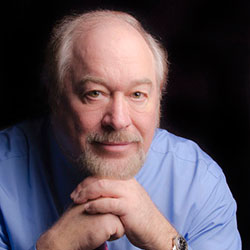
Clinical Applications of Humor in Psychotherapy: A Seriously Credible Approach
Steven Sultanoff, PhD
Room: Cypress B
Description:
Humor in the serious realm of psychotherapy? Integrating therapeutic humor into psychotherapy is more than simply using humor with clients. While most therapists report utilizing humor within the therapeutic relationship, few do so with conscious and purposeful intent. This presentation will explore how and why integrating humor into clinical practice can be effective as well as assist clinicians to use humor with clinical awareness.
All psychotherapy requires interventions that target feelings, behaviors, thoughts, and/or biochemistry. Each major theoretical approach targets one or more of these aspects of human process (humanistic—feelings/emotions; behavioral/reality—behaviors; cognitive/RET— thoughts; psychodynamic—thoughts and feelings; and psychopharmacology—biochemistry/physiology). Humor activates change in all four of these areas, thus making it a powerful tool for clinical intervention.
Participants will learn a model of clinical humor that provides a foundation for the use of humor in psychotherapy and discover how humor (when purposely chosen as a clinical intervention) can be used as a relationship enhancing intervention, as well as a diagnostic and treatment tool. Participants will also learn to differentiate empathic versus hostile humor and discover the core therapist qualities essential for the use of therapeutic humor. Specific examples from real cases will be presented to illustrate the core concepts.
Educational Objectives:
1. Describe the link between humor and feelings, behaviors, thoughts, and biochemistry.
2. Express how to consciously and purposefully use humor to build the therapeutic relationship, treat, and diagnose.
3. Identify the clinical benefit of humor with clients.
3:00pm – 4:30pm
SC27

Healing Trauma with Ritual and Ceremony: Connecting Ericksonian Hypnosis and Native American Spirituality in Brief Therapy
Claudia Weinspach, Diplom-Psychologin
Room: Sand Pebble D-E
Description:
Although there is a long tradition, especially in indigenous cultures, of healing with ritual and ceremony, the modern scientific world rather excluded spiritual components of healing for a long period of time.
It was the Cartesian revolution that includes the idea that all phenomena can be understood and thereby indicating that you can only trust that which can be explained. As a consequence the mind was separated from the intuitive wisdom of our body and spirit. Ceremonies provide the structure though which we touch the spirit and promote our own healing as well as the healing of others. What will be taught: In this workshop we will apply new research findings (like the brain´s plasticity) with ancient wisdom to expand our healing power. In the language of ceremony we will explore the factors that promote the healing process.
Relevance to the conference:
Learning more about ancient wisdom that can be applied in modern therapy not only enriches the therapeutic repertoire of each therapist or doctor but also helps creating a new balance in society. Honoring and applying spiritual components includes helping patients being connected within them and thereby strengthen their immanent healing powers.
Presentation Format: lecture, experiential
Educational Objectives:
1. Identify three elements of healing ceremonies
2. Name the connections between the ordinary world and a ritual.
3. List 5 components of the indigenous health concept.
3:00pm – 4:30pm
SC28

Awareness Integration Model – Deep Integrative Psychotherapy
Foojan Zeine, PsyD
Room: Cypress A
Description:
The clinical method of the Awareness Integration model has evolved from Cognitive, emotional, Behavioral, body-oriented, and trauma releasing theories and has been researched with a diverse population with significant results toward minimizing Depression and Anxiety. The original developer of the AI model will explain the 6 phase model toward the creation of awareness of thoughts, feelings, behavior and the impact on the client’s daily life while giving specific tools to integrate and heal the past traumas that act as obstacles to creating fulfillment in different relationships and areas of life.
Educational Objectives:
1. List 9 principles of the Awareness Integration Model
Demonstrate 6 phases on how to apply the AI Model
Describe the Integrative approach of the AI Model
3:00pm – 4:30pm
SC29
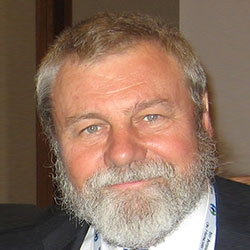
Implications that Change People
John Lentz, D. Min.
Room: Sand Pebble A-C
Description:
The Author of “ One Liners that Change People” is back with a new perspective that has also brought almost instant change. Based upon linguistic concepts from Hypnosis, combined with Solution Focused frame this approach employs implications to alter beliefs and maximize potential. You and your clients have often made changes because of implications that you experienced. So, using implications to generate experiences to help clients realize their abilities is easier than you might believe. Especially once you begin for opportunities and seeing the usefulness of implications to alter options, increase self-respect. While this workshop teaches useful tools for brief therapy, it also will give participants positive experiences for themselves. This advanced workshop evokes experiences that lead clients to discover solutions that work. Whether the client experiences their solution, or has a dramatic shift in understanding their options it often leads to motivation and success. Utilizing implications makes this approach compatible with any other school, and simply helps to speed up the results.
Educational Objectives:
1. List 3 ways that implications can be utilized in therapy.
2. Define implications with examples.
3. List at least 2 ways they can or already do use implications in their practice.
3:00pm – 4:30pm
SC30

Brief Treatment with the Borderline Personality
Michael Munion, MA
Room: Regency Ballroom
Description:
Brief treatment with the Borderline Personality presents substantial challenges. Features common to Borderline Personality Disorder (BPD) often make the therapy process chaotic and unproductive. This approach focuses treatment on each specific issue as a single episode of care, which allows for a success experience for the patient. Brief Treatment with the BPD patient makes no pretense at wholesale personality reconstruction, but rather considers the impact of the disorder on the therapy process in order to enhance the probability of success in successive brief episodes of care. This workshop reviews the etiology of BPD from both the Object Relations and the Psycho-social viewpoints. The value of understanding the resultant symptoms, from the standpoint of the patient’s phenomenology, is discussed as a context for managing the therapeutic relationship. Specific boundaries and development of a solution-focused plan are essential to the management of the therapy process, and are addressed in this workshop. Brief Treatment with the BPD population requires that the patient has both a safety plan, and an established community network to meet emergent needs. Development of a safety plan and a community network are therefore also addressed in this workshop. Specific protocols for dealing with issues such as Self-injurious behavior and Suicidal Ideation are reviewed.
Educational Objectives:
1. Describe BPD specific treatment issues.
2. Describe protocols to guide in the process of managing specific treatment issues.
3. Utilize a model to transition long term BPD patients to brief solution focused episodes of care.
3:00pm – 4:30pm
SC31
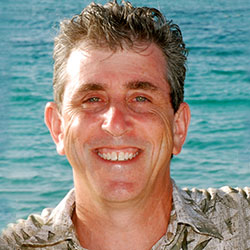
Energy Psychology: A Brief Therapy to Treat Trauma
Robert Schwarz, PsyD
Room: Grand Peninsula A-D
Description:
Energy Psychology (EP) is a family of focused and brief approaches to releasing stuck energy in the mind-body system that usually is the result of unresolved small “t” or big “T” trauma. The most common form of EP is known as Emotional Freedom Techniques (EFT) or tapping. Clinical experience and a significant body of research (over 80 studies) has shown energy psychology to be a highly effective brief treatment of PTSD in contexts that range from war related PTSD in US veterans to the effects of genocide in Rwandan orphans. EP treatment is usually gentle without abreaction.
This workshop presents an elegant integration of Interpersonal neurobiology, polyvagal theory and memory reconsolidation that underlies energy psychology approaches to trauma treatment. Participants will learn how to incorporate this “power therapy” with their current methods to regulate emotional over-arousal and escalating patterns of reactivity while creating greater personal empowerment. Discover how to actually remove the traumatic energy/emotions from traumatic events that facilitates insight, mindfulness and post traumatic growth. Both the current research and the basic clinical protocols will be presented.
Educational Objectives:
1. List 3 neuroscience based reasons for Energy Psychology effectiveness as a brief therapy
2. Describe the 4 steps of emotional freedom techniques’ basic recipe
3:00pm – 4:30pm
SC32

Effective Management of Chronic Anxiety and Depression with Essential Neurobiological Communication
Bart Walsh, MSW
Room: Grand Peninsula E-G
Description:
This presentation poses a substance abuse treatment which acknowledges and accommodates the personal needs being addressed by substance use, bypasses perceived resistance and employs idiosyncratic psycho-biological learning to achieve a body-mind gestalt complementary to the client’s sobriety. Client self-empowerment and relapse prevention are built into the intervention This method develops a safe framework for addressing any subsequent mental health themes directly or indirectly related to substance misuse. Ideomotor questioning is employed as a practical conduit to body-mind communication and function. Because this is a relatively new strategy, fundamental information applicable to all levels of professional experience will be provided.
Educational Objectives:
1. Define the utilization principle as applied to psycho-biological learning.
2. Illustrate one brief approach to substance abuse treatment.
3. Describe one application of ideomotor questioning.
5:00pm – 7:00pm
K02
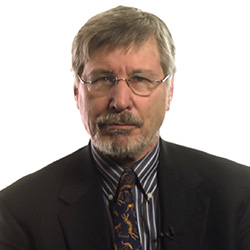
If Trauma Changes the Brain, What is Necessary for Effective Treatment?
Bessel van der Kolk, MD
Room: Grand Peninsula ABCD
Description:
This workshop will show how trauma affects the developing mind and brain, and teach how trauma affects self-awareness and self-regulation. We will focus on the fundamental difference between trauma de-sensitization vs. integration and growth, and look at the difference between disrupted attachment and traumatic stress. We will examine the role of interpersonal rhythms and attunement in establishing a sense of self and community. This workshop will discuss and demonstrate affect regulation techniques, examine ways to deal with fragmented self-experience, and teach the benefits of yoga, EMDR, meditation, neurofeedback, music and theater.
Educational Objectives:
1. Describe the fundamental difference between trauma-desensitation vs. integration and growth.
2. Describe the difference between disrupted attachment and traumatic stress.
the top
8:30am – 10:30pm
WS01

CBT for Personality Disorders
Judith Beck, PhD
Room: Grand Peninsula A-D
Intermediate
Description:
This intermediate workshop deals with the challenges of treating clients with personality disorders, clients who, for example, fail to engage in treatment, miss sessions, feel hopeless and stuck, become angry in session, engage in self-harm, use substances, blame others, avoid homework, experience continual crises, and so on. The workshop will focus on conceptualization, the therapeutic alliance, treatment planning, and the use of a variety of strategies from many different psychotherapeutic modalities within the context of the cognitive model to help clients change their thinking at both an intellectual and an emotional level to bring about enduring changes in cognition, mood, behavior, and general functioning.
Educational Objectives:
1. Use a cognitive conceptualization to guide treatment for personality disorder patients.
2. Conceptualize therapeutic relationship problems.
3. Apply specialized strategies to overcome challenges in treatment.
8:30am – 10:30pm
WS02

Love the Questions: 5 Categories of Solution Focused Questions That Will Transform Your Practice
Elliott Connie, MA
Room: Cypress A
All Levels
Description:
Try to love the questions themselves as if they were locked rooms or books written in a very foreign language. Don’t search for the answers, which could not be given to you now, because you would not be able to live them. And the point is to live everything. Live the questions now. Perhaps then, someday far in the future, you will gradually, without even noticing it, live your way into the answer.
This is a poem by Rilke and illustrates the power and importance of questions.
Since the Solution Focused Approach is a questions based process, it is essential that clinicians learn the art of asking the kinds of questions that lead towards sustainable questions in their clients’ lives. This means your learning has to go beyond theory and technique, instead being about language.
This workshop will be about this question process. The facilitator will demonstrate 5 different categories of SFBT questions showing how to ask such questions in a way that leads towards the kind of client responses that are likely to lead towards change.
Educational Objectives:
1. Describe the Solution Focused Approach in their work.
2. Identify the core components that make Solution Focused questions more effective.
3. Identify the difference between problem focused and Solution Focused questions.
8:30am – 10:30pm
WS03

Evocative Approaches to Change
Jeffrey Zeig, PhD
Room: Regency Ballroom
Advanced
Description:
Three evocative orientations to psychotherapy, utilization, using metaphor, and strategic development, will be explained, demonstrated and practiced. There are components to each of these methods that will be addressed.
Educational Objectives:
1. Define the utilization approach.
2. Describe the difference between metaphors and similes in both empathizing with problems and the in eliciting solutions.
3. List three techniques of strategic development.
8:30am – 10:30pm
WS04
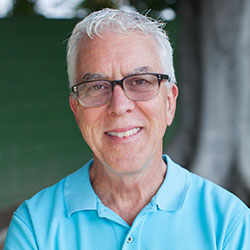
The Anxious Moment and How to Handle It
Reid Wilson, PhD
Room: Sand Pebble A-C
Intermediate
Description:
A client’s willingness to embrace doubt and discomfort while feeling afraid requires them to elevate above their immediate fear and apply a new response based on a new and provocative therapeutic frame of reference. This workshop will present how to persuade clients to engage in such a therapeutic protocol to respond to an anxious moment in a manner that promotes healing. Participants will learn how to present four concepts to justify this approach. First, the limbic system’s amygdala needs to learn over time that an alarm response is not required in moments similar to this one. Second, the working memory is a powerful asset whose tasks include pushing away irrelevant information and distractions and then directing the attention to where you want it in the next few moments by calling up assets from long-term memory. Third, the work of Barb Fredrickson supports the strategy of generating a positive meaning for purposely producing those feelings of threat and then stepping forward, voluntarily, because in that moment you can see your action in the broader context of your life’s goals. Fredrickson believes that positive intentions can transform negative experiences. Fourth, Les Greenberg’s lifetime of research leads him to rationalize that you can replace the emotions of withdrawal with the emotions of approach. He believes that you do not accomplish this by thinking, reasoning, allowing, letting go of, or facing your fear, nor do you accomplish this by exposure, extinction, or habituation. You can learn to approach instead of withdraw during a threatening moment by activating a competing emotion that expresses a competing point of view.
Educational Objectives:
1. Defend logically the therapeutic benefits of embracing doubt and discomfort.
2. Explain how to engage the working memory in service of therapeutically managing the anxious moment.
3. Persuade an anxious client of the benefits of seeking out distressing moments while simultaneously holding an incompatible point of view.
8:30am – 10:30pm
WS05
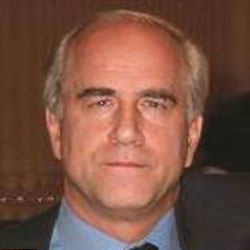
The Systemic View of Trance: The Use of Hypnosis with Couples and Families
Camillo Loriedo, MD, PhD
Room: Cypress C
All Levels
Description:
Hypnosis will be presented no more as an individual/linear event but rather, within a system perspective, as a circular and evolving process, while couples and families will be considered as a source of natural healing resources that the therapist should discover and activate. Specific direct and indirect techniques required to induce a deep and meaningful change of the most rigid family patterns will be introduced. The demonstration of a family hypnotic session will give a clear idea of the powerful and subtle resistances families can develop in the course of the hypnotic treatment as well as of how naturalistic systemic hypnosis can transform these resistances in the required solutions.
Educational Objectives:
1. Describe six different forms of systemic therapy according with the type of family resistance
2. List five different specific hypnotic inductions with families
8:30am – 10:30pm
WS06
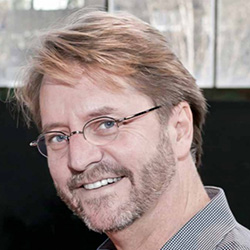
Better Results: Using Deliberate Practice to Improve Therapeutic Effectiveness
Scott Miller, PhD
Room: Grand Peninsula E-G
All Levels
Description:
What can mental health professionals do to enhance their performance? Available evidence makes clear that clear that attending a typical continuing education workshop, specializing in the treatment of a particular problem, or learning a new treatment model does little to improve effectiveness. In fact, studies to date indicate clinical effectiveness actually declines with time and experience in the field. The key to improved performance is engaging in deliberate practice. At this workshop, the latest research on deliberate practice will be translated into concrete steps all clinicians can immediately apply in their efforts to achieve better results.
Educational Objectives:
1. Demonstrate learning of the evidence-base supporting the use of deliberate practice to improve therapeutic effectiveness.
2. Discuss a valid and reliable method for assessing their baseline level of effectiveness.
3. Discuss a valid and reliable method for identifying performance improvement opportunities unique to their own clinical practice.
8:30am – 10:30pm
WS07
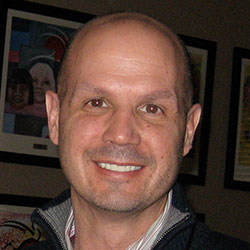
Time Passages: Honoring the Past to be Effective in the Present and Future
Bob Bertolino, PhD
Room: Cypress B
All Levels
Description:
Effective clinicians draw on various sources of external knowledge to inform practice. One source can be found in the models of today which are popularized in numerous books and training opportunities. A second source is comprised of discoveries in fields such as medicine, education, philosophy, art, spirituality, and the sciences. Although these two sources provide a wealth of knowledge, effective practitioners also rely on a third source that not only serves as a foundation for practice but also informs treatment strategies. The third source is rooted in traditional psychotherapy theories and the contributions of early pioneers such as Alfred Adler, Carl Rogers, Viktor Frankl, Virginia Satir, and Milton Erickson. Despite their influence, the ideas and practices of these and other early innovators are becoming less and less a part of psychotherapy training, placing them at risk of being lost to each generation of new clinicians. The purpose of this workshop is to explore how psychotherapy’s historical roots and current movements, both in and around psychotherapy, intersect to form a comprehensive foundation of practice that serves as the basis for improving the overall benefit of therapy to clients.
Educational Objectives:
1. List three sources of external knowledge that form the basis of effective practice.
2. Describe two strategies to improve the benefit of therapy to clients.
10:45am – 12:45pm
WS08
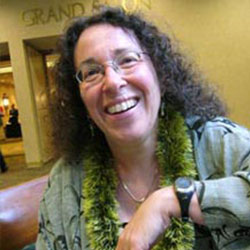
Culturally Competent Trauma Practice
Laura Brown, PhD, ABPP
Room: Cypress B
All Levels
Description:
Just as human beings are not generic, so, too, trauma is an event that is affected by and interacts with people’s intersectional identities. This workshop will introduce participants to a mindful model for understanding how to move towards cultural competence in practice with trauma survivors. We will pay particular attention to therapist countertransference/fragility, and to the effects of shame, guilt, privilege, and dominant culture narratives on trauma treatment. Some experience working with trauma survivors is assumed.
Educational Objectives:
1. Describe how trauma interacts with and infuses intersectional identities
2. Utilize strategies for mindful relationship with one’s guilt, shame, and fragility
3. Describe how culturally competent practice enhances the effects of treatment
10:45am – 12:45pm
WS09
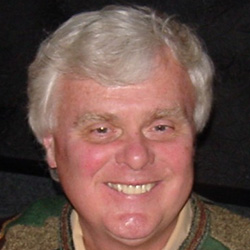
Healing Yourself: Live Therapy with David and Jill
David Burns, MD / Jill Levitt, PhD
Room: Grand Peninsula A-D
Advanced
Description:
Dr. David Burns and his colleague, Dr. Jill Levitt, will do live therapy with an audience volunteer who’s been struggling with depression and anxiety. They will give you the unique opportunity to go behind closed doors to see how TEAM-CBT actually works in real time. When you witness the rapid transformation of intense self-doubt into joy, relief, and enlightenment, you will feel much better about yourself, while at the same time learning some awesome new tools that you can use right away to improve your clinical outcomes. This promises to be an exciting, educational and inspirational experience!
Educational Objectives:
1. Describe the four (T, E, A, M) components of TEAM-CBT
2. Explain how to track therapeutic progress in a single therapy session
3. Describe the importance of reducing therapeutic resistance before implement “methods”
10:45am – 12:45pm
WS10

Asking “How” Questions, Making Distinctions, and Defining Targets in Brief Therapy: The Discriminating Therapist
Michael Yapko, PhD
Room: Grand Peninsula E-G
All Levels
Description:
Cognitive psychology has given rise to new understandings about how people gather and use information. This includes how people decide, usually at a level outside of awareness, what to pay attention to in a given environment and, likewise, what can be deemed irrelevant. One good “how” question can bring into sharp focus what the client doesn’t know – or knows that isn’t so – that’s working against him or her in some debilitating way. This highly practical workshop will focus on the “how” question as a vehicle for identifying the specific discriminations – key elements that distinguish good options from poor ones – that a client can learn to make that will lead to better decisions and a better quality of life.
Educational Objectives:
1. Assess the role of cognitive style in decision-making
2. Describe the role of global cognitions in client problems
3. Identify key discriminations that underlie specific clinical presentations
10:45am – 12:45pm
WS11
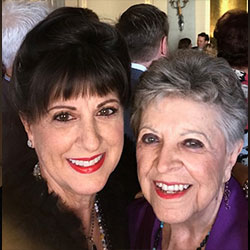
Blending Hypnosis with Sound to Speed Up the Therapeutic Process
Norma Barretta, PhD and Jolie Barretta Keyser
Room: Cypress C
Description:
CYMATICS: Resonance made visible is a vibrational phenomenon. Recent, as well as long ago exploration of Sacred Sound, and the vibrations it produces indicate that there is an ameliorative effect on the listener: “Music soothes the savage beast.”
We have much evidence that certain sounds reduce stress and pain and aid sleep. Now we are finding that certain sounds speed up the healing process…physiologically as well as mentally and emotionally. When added to hypnosis, the effects are exponential.
We will demonstrate various sounds and frequencies and discuss their applications to various health conditions. We will show some graphic visuals of sounds and differences between harmonic sound and distorted sound and how those differences affect us.
We presuppose therefore, that the tonal quality and the vibrations in the words produced by the VOICE of the therapist are a factor in the therapeutic process. Adding specific sounds as background enhances and speeds up the healing we seek in therapy sessions.
Sound, music and frequencies may indeed be part of the medicine of the future.
Educational Objectives:
1. Describe how you hear and see these therapeutic sounds.
2. List the differences between the hypnotic states with and without sound enhancement
3. Distinguish the subtle transformations resulting from exposure to harmonic sound as opposed to discordant sound.
10:45am – 12:45pm
WS12

Targeted Treatment for Anxious Families: Immediate and Active
Lynn Lyons, MSW
Room: Sand Pebble A-C
All Levels
Description:
The most frequent complaint I hear from parents about the treatment they receive for their child’s anxiety? “No one told us what to DO!” Anxiety is often generational, and by the time a family arrives at your office, they have been in the grips of the cult leader called anxiety for years. Worse yet, many of the things they have been doing, although loving and supportive, are actually making the anxiety stronger. This workshop will describe how to give families immediate and active solutions from the first session, including the use of front loading to provide critical information and understanding, changing the family’s relationship with anxiety, and creating active interventions that are often the opposite of what they’ve typically been doing.
Educational Objectives:
1. Develop active assignments that correct the common cognitive traps that bolster both anxiety and depression.
2. Explain the use of front loading in a first session with a family.
3. Identify avoidant and safety behaviors that strengthen anxiety in families.
10:45am – 12:45pm
WS13
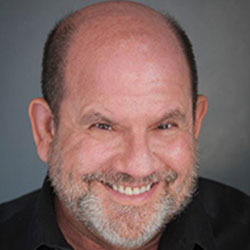
Dealing with Projective Identification in Couple Therapy: The PACT Approach
Stan Tatkin, PsyD, MFT
Room: Regency Ballroom
All Levels
Description:
This two-hour workshop deals solely with the matter of projective identification (PI) as experienced in couple therapy. PI is perhaps one of the least talked about and most problematic issue in all modalities of psychotherapy. PI is also one of the most effective tools therapists can use to discover implicit information about the couple and accelerate the therapy forward. Therapists will commonly confront one partner without realizing they are being pointed there by the other partner. Therapists may experience feelings of anger, boredom, anxiety, fear, depression, and erotic thoughts and fantasies due to PI unrealized. Attendees will learn how to become aware of this non-conscious process of communication and defense employed by all couples at some point. Through demonstration and video presentation, attendees will also learn what to do about PI – which strategic interventions will work and how to evaluate their effectiveness.
Educational Objectives:
1. Describe why you’ve chosen which partner to be more likely to be using projective identification at any given time.
2. Differentiate and describe the difference between projective identification and other forms of countertransference.
3. Describe raw thought, fantasies, urges, and feelings as a means for constructing an effective intervention.
4. Demonstrate understanding of crossing techniques for rooting out implicitly communicated material.
10:45am – 12:45pm
WS14
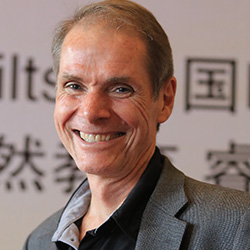
Applying Principles of Generative Coaching to Brief Therapy
Robert Dilts
Room: Cypress A
All Levels
Description:
The core focus in Generative Coaching is creativity: How do you create a successful and meaningful work life? How do you create great personal relationships? How do you develop a great relationship with yourself—your body, your past, your future, your wounds, and your gifts?
Generative change means creating something beyond what currently exists, whether in personal or professional life. It is not merely a cosmetic change, but a contextual shift that allows new levels of performance. Generative Coaching assumes that reality is constructed, and that this creative process can be mindfully engaged for positive outcomes. To do this, a person’s state of consciousness is the difference that makes the difference. Generative Coaching focuses on how to build the generative states needed to produce change and on how to maintain these states in order transform the obstacles and barriers that will inevitably arise.
Educational Objectives:
1. Describe the basic principles of generative change.
2. Present the six steps of generative coaching and their relevance to brief therapy.
3. Demonstrate how establish a generative state and apply it to reach goals and transform obstacles.
12:45pm – 2:00pm
Lunch Break

Lunch Break
2:00pm – 4:00pm
WS15
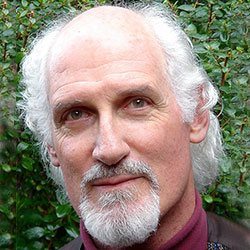
Single Session Therapy: When the First Session May be the Last
Michael Hoyt, PhD
Room: Cypress C
Description:
Many therapies involve very brief lengths of treatment, including one session. A structure will be presented for organizing the tasks and skills involved in different phases (pre-, early, middle, late, follow-through). of therapy. Numerous case examples, including some on video, will illustrate brief therapy techniques applicable in both initial sessions and in the course of longer treatments.
Educational Objectives:
1. Describe the tasks and skills of a single-session-at-a-time therapy associated with different phases of treatment;
2. Describe brief, single-session therapy techniques that may be useful in different clinical situations;
3. Discuss application of one-session principles to participants’ own clinical cases.
2:00pm – 4:00pm
WS16
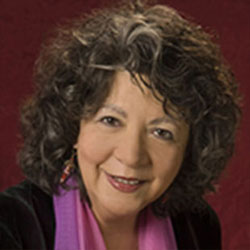
Healing Traumatic Wounds Using a Brief Therapy Model
Janina Fisher, PhD
Room: Cypress B
All Levels
Description:
Traditional models of trauma treatment emphasize a narrative approach centered on the overwhelming events, a very long, slow, painful approach in which clients get worse before they get better. But rather than ‘treat’ the events, neuroscience teaches us how to treat their effects. When trauma symptoms are “decoded” as evidence of how individuals survived, they become comprehensible and treatable. Clients are recruited as active participants in the treatment, are educated to understand trauma-related responses, reassuring them that they are not inadequate or crazy. Best of all, a brief therapy model can be inherently relational while avoiding the ‘side effects’ of long-term therapeutic relationships.
Educational Objectives:
1. Define the ‘living legacy’ of trauma
2. Describe the stages of brief therapy for trauma.
3. Identify three somatic interventions for treating post-traumatic
2:00pm – 4:00pm
WS17

Out of the Blue: Three Non-Medication Ways to Relieve Depression
Bill O’Hanlon, MS, LMFT
Room: Grand Peninsula A-D
All Levels
Description:
Recent research and insights have given a new understanding of depression, not as a deficit in chemicals, but as a problem with neurogenesis (new brain growth and connection). Antidepressants may work by promoting brain cell and neuronal growth and connection, but there are other ways, within the grasp of therapists, counselors and addiction specialists that can make an immediate and lasting difference in helping relieve depression. This session will give three simple methods for relieving depression using insights from recent brain science.
Educational Objectives:
1. Articulate a new model of depression based on new research on the brain
2. Utilize at least one new therapeutic intervention based on understanding the new brain science and depression
3. List three non-medication ways to receive depression
2:00pm – 4:00pm
WS18

How to Deeply Open to a Client’s Experience with Safety and Skill
Stephen Gilligan, PhD
Room: Regency Ballroom
All Levels
Description:
By virtue of our “mirror neurons”, it is impossible for therapists to not be deeply touched by client’s experiences. We will explore how this can be done skillfully and safely, thereby opening multiple pathways of feedback, compassion, and technical competencies. Special attention will be to mindful activation of the three “minds” of somatic, cognitive, and relational field intelligence, again with the intent of creating a deep and sophisticated conversational connection.
Educational Objectives:
1. Describe 3 ways to deeply connect with a client.
2. Demonstrate how these relational connections can improve feedback and technical competency.
3. Identify verbal and nonverbal channels for a creative conversation
2:00pm – 4:00pm
WS19
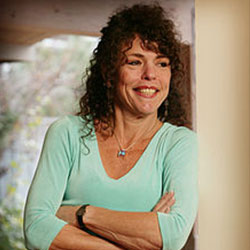
Healing from Infidelity: A Step-By-Step Program for Therapists
Michele Weiner-Davis, MSW
Room: Grand Peninsula E-G
All Levels
Description:
Without a concrete road map for helping couples heal from infidelity, it’s easy for therapists to get lost in the labyrinth of emotions. Using video clips, this workshop will provide a comprehensive, step-by- step plan for dealing with different phases of recovery, from the crisis of discovery through forgiveness. Learn how to effectively coach both betrayed and unfaithful partners to undertake specific tasks to heal personally and strengthen their relationship, and master tools for navigating the complex, zigzag road to recovery, where progress can alternate with setbacks from week to week.
Educational Objectives:
1. Describe when to discuss the details of the betrayal and whether to give an ultimatum to end the affair
2. Describe how to help clients manage rumination and self-sabotaging thoughts, and offer apologies that matter
3. Describe how to help partners begin to rebuild trust through “x-treme” accountability
2:00pm – 4:00pm
WS20

Gay Sons and Their Mothers: The Relational Mystique
Rick Miller, MSW
Room: Cypress A
Description:
The relationship between gay sons and their mothers is fascinating based on the history of psychiatry pathologizing this bond, suggesting an enmeshment that contributed to the son being gay.
Currently, this relationship consists of an empowering bond that contributes to a healthy sense of self in a world where acceptance isn’t necessarily prevalent. The actual key to wellbeing consists of receiving good enough mothering rather than total acceptance of his being gay.
This presenter, a gay male author notes that there is little information on this topic, hence the inception Gay Sons and Mothers. This “docuseries” consists of photos and narratives depicting these bonds, video interviews portraying the emotional aspects of their relationships, as well as theory based on interviews and personal experiences.
This workshop provides these findings regarding mother son dyads, anecdotes from people interviewed, and moving video clips of gay sons and/or mothers, including the experiences of the interviewer.
Subjects vary in age, religions, and ethnic backgrounds. Themes include coming out, acceptance or lack thereof, the importance of a good enough mother, dealing with disappointment or trauma, and grief when a mother has passed away. General issues pertaining to being gay will also be covered.
Educational Objectives:
1. Recite how the bond between gay sons and mothers is crucial for the sons’ psychological development.
2. Describe cultural implications of coming out for African Americans and Latinos.
3. List three interventions for working with gay clients who were traumatized by their mothers.
2:00pm – 4:00pm
WS21

Mindfulness and Compassion: Tailoring the Practice to the Person
Ronald Siegel, Psy.D
Room: Sand Pebble A-C
All Levels
Description:
Mindfulness and compassion practices hold great promise not only for our own personal development, but also as remarkably powerful tools to augment virtually every form of psychotherapy. They are not, however, one-size-fits-all remedies. Practices need to be tailored to fit the needs of particular individuals—and this presentation will show you how to creatively adapt them to meet the needs of diverse people and conditions.
Educational Objectives:
1. Describe the three core elements of mindfulness practice
2. Identify possible adverse effects of mindfulness and compassion practices and how to avoid them
3. Specify how mindfulness and compassion practices can be tailored to the needs of particular types of clients
4:15pm – 5:15pm
K03

Birth Order and Human Behavior: Understanding an Elusive Relationship
Frank J. Sulloway
Room: Grand Peninsula A-D
Description:
For more than half a century, studies of birth order and human behavior have been mired in disagreement over the existence, magnitude, and specific nature of this relationship. In this talk I argue that much of the previous research in this field has been substantially impeded because birth order is an imperfect proxy for multiple within-family influences that shape personality development within families, but that are overlooked in most studies. Much of the previous disagreements in this field can also be can be attributed to other methodological problems, including a failure to consider individual differences and their sometimes complex interactions with birth order, as well as the role of the behavioral context. This talk presents the results of a novel research design aimed at overcoming these problems and involving 438,251 responses collected using Internet surveys. These results reveal extensive suppression of birth order effects, which in turn indicates that birth order appears to explains upwards of ten the variance in personality compared with what has previously been documented.
Educational Objectives:
1. Describe what is known about birth order and its relationship with personality.
2. Describe the actual causes of birth order effects, given that birth order is really just a proxy for certain aspects of family dynamics that are generally overlooked in studies on this subject.
3. Describe how remarkably context sensitive birth order effects are in the expression of personality, which helps to explain why so much controversy still exists about the nature and magnitude of these effects.
5:30pm – 6:30pm
Author’s Hour

Author’s Hour
Room: Grand Peninsula Foyer
Description:
Detailed info
the top
8:00am – 9:00am
CD01

Evocative Psychotherapy
Jeffrey Zeig, PhD
Room: Grand Peninsula A-D
Intermediate
Description:
The clinical demonstration is evocative psychotherapy.
Educational Objectives:
1. Define an evocative approach to psychotherapy.
2. Indicate when to use an evocative approach.
8:00am – 9:00am
CD02

A Cognitive Behavioral Approach to Weight Loss and Maintenance
Judith Beck, PhD
Room: Regency Ballroom
All Levels
Description:
Most individuals have difficulty either losing weight or sustaining weight loss. A significant reason for this is that they never learned the cognitive and behavioral skills they need to be successful. In this live event, I will demonstrate how to help dieters make fundamental changes in their thinking so they can maintain fundamental, and long lasting changes in their eating behavior. Skills include setting achievable goals; creating an accountability system; building self-efficacy; consistently using good eating habits; managing hunger, cravings, and the desire to eat for emotional reasons; solving eating-related problems; staying on track and getting back on track immediately when they make a mistake; and continually motivating themselves through their lifetime.
Educational Objectives:
1. Describe how the cognitive model applies to weight loss.
2. List techniques to deal with hunger, craving and emotional eating.
3. Utilize strategies to motivate clients.
8:00am – 9:00am
GC01

Anxiety
Bill O’Hanlon / Reid Wilson
Room: Grand Peninsula EFG
Description:
Compare and contrast complementary perspectives on the theory and practice of working with anxiety disorders.
Educational Objectives:
1. Describe differences in the expert’s theoretical model.
2. Given a patient with anxiety, describe how to use the perspectives of one of the experts in clinical practice.
8:00am – 9:00am
GC02

Trauma in Families and Children
Camillo Loriedo / Lynn Lyons
Room: Sand Pebble A-C
Description:
Trauma does not only affect individuals; it effects families. Systemic perspectives on the sequel to trauma will be presented.
Educational Objectives:
1. List characteristics of posttraumatic stress disorder.
2. Describe the systemic approach to working with trauma.
8:00am – 9:00am
TI01

The Merits of Applying Hypnosis in Brief Psychotherapy
Michael Yapko, PhD
Room: Cypress B
All Levels
Description:
This presentation will allow for a dialog with attendees regarding the merits of hypnosis, the ways it can be applied clinically, the differences between laboratory and clinical effects on hypnotic responsiveness, and other topics of interest regarding hypnosis.
Educational Objectives:
1. List some of the hypnotic phenomena that are relevant in treatment.
2. Identify some of the strengths hypnosis amplifies in therapy.
3. Discuss attributes of hypnosis that surface during hypnotic treatments.
8:00am – 9:00am
TI02

Solution Focused Brief Therapy with Couples: A Focus on Love
Elliott Connie, MA
Room: Cypress A
All Levels
Description:
Since the Solution Focused Approach is conversational in nature, and, based on questions, the clinician who is working with couples needs to be comfortable asking these kinds of questions when there are more than one person in the room. This can be tricky due to the nature of couples therapy. This talk will center on how to conduct couples session using this approach and how to use the question process to navigate even the trickiest sessions.
Educational Objectives:
1. Utilize the Solution Focused Approach in their work with couples.
2. Identify the core components that make Solution Focused questions more effective with couples.
3. Identify the difference between problem focused and Solution Focused questions.
9:15am – 10:15am
CD03

Hypnosis and Building Resources
Stephen Gilligan, PhD
Room: Grand Peninsula A-D
All Levels
Description:
This live demonstration will show the 6-step model for generative change: (1) opening a creative space, (2) setting a positive intention, (3) developing a creative state, (4) taking action steps, (5) transforming obstacles, and (6) homework and self-practices.
Educational Objectives:
1. Describe how to open a creative state.
2. Discuss how to transform an obstacle into a resource
3. Demonstrate how to develop a positive goal.
9:15am – 10:15am
CD04

Developing Mutual Responsivity: Utilizing Hypnotic Rapport to Develop a Shared Deep Experience in Couple Therapy
Camillo Loriedo, MD, PhD
Room: Regency Ballroom
Description:
As suggested by Milton Erickson, naturalistic hypnosis seems to be one of the best way of utilizing couple’s resources. Frequently couples fail in reaching a deep mutual exchange and complain of being unable to satisfy their needs for intimacy. Hypnotic experience seems to produce by itself a deep contact that rarely develops in their habitual patterns. Specific couple’s responses to hypnotic induction that can be utilized to produce contact and intimacy will be demonstrated. In some other cases couples are caught by conflicts they are unable to solve. A couple hypnotherapist can extend to both couple members rapport, and succeed in obtaining a special relationship that produces more syntonic and attuned behaviors, in which conflict intensity decreases and a greater ability to listen to each other and negotiate conflicts develops.
Educational Objectives:
1. List five hypnotic couple’s responses that can help to developing contact and intimacy
2. Demonstrate understanding of how to extend rapport to the couple and to reduce conflicts intensity
9:15am – 10:15am
GC03

Phobias
Robert Dilts / Jeffrey Zeig
Room: Sand Pebble A-C
Description:
Technical and theoretical approaches to working with phobias will be described from complementary perspectives.
Educational Objectives:
1. Describe the assessment process for working with a phobia.
2. Given a patient with a phobia indicate a clinical approach.
9:15am – 10:15am
GC04

Depression
Judith Beck / Michele Weiner-Davis
Room: Grand Peninsula EFG
Description:
Depression is a complex of psychosocial, biological, and environmental factors. Perspectives on evaluation and treatment will be offered.
Educational Objectives:
1. Describe a typical symptom complex for depression
2. Given a patient with depression, list two methods for beginning treatment.
9:15am – 10:15am
TI03

Schools, Parents, Students and Mental Health: How Can Clinicians Help?
Lynn Lyons, MSW
Room: Cypress B
All Levels
Description:
Schools, Parents, Students and Mental Health: How Can Clinicians Help? Educators are being asked to do more and more to support the emotional wellbeing of students and understand the mental health needs of their students. Programs are consistently being introduced and professional development offered. What’s working and what isn’t? How much can we expect of teachers and administrators? How is the collaboration and communication between parents, schools, and outside providers going? And what are students actually earning in about their mental health in school?
Educational Objectives:
1. Explain the common errors in diagnosis of children in school settings.
2. Recognize avoidant and safety behaviors that strengthen anxiety and depression.
3. Write effective behavioral plans and IEP goals for use in schools.
9:15am – 10:15am
TI04

Evocation: Why Therapy Can Be Brief
Bill O’Hanlon, MS, LMFT
Room: Cypress A
All Levels
Description:
What can brief therapy work? In this session, Bill O’Hanlon will make the case that it involves evocation of already existing resources, so the client doesn’t have to be fixed, taught new skills or make major changed to resolve problems.
Educational Objectives:
1. Articulate what evocation is.
2. List at least one way to evoke resources
3. Ask questions to evoke abilities
10:30am – 11:30am
CD05

Using Hypnosis for Anxiety: Opportunities for Seeding Action Over Avoidance
Lynn Lyons, MSW
Room: Grand Peninsula A-D
All Levels
Description:
Using hypnosis to help anxious people relax and feel calm is a great start, but hypnosis offers other valuable opportunities to disrupt the patterns of anxiety, create a different relationship to thoughts and physical symptoms , and to shift the client from avoidance into action.
Educational Objectives:
1. Identify the use of hypnotic language and suggestion to amplify resources in anxious clients.
2. Explain the value of seeding homework assignments during hypnotic interventions.
3. Describe the value and limitations of relaxation as a strategy with anxious clients.
10:30am – 11:30am
CD06

Best Hopes: A Live Demonstration
Elliott Connie, MA
Room: Regency Ballroom
Description:
This event will feature a live demonstration of the Solution Focused Approach in action. Attendees will be able to ask question to the presenter about this session.
Educational Objectives:
1. Utilize the Solution Focused Approach in their work.
2. Identify the core components that make Solution Focused questions more effective.
3. Identify the difference between problem focused and Solution Focused questions.
10:30am – 11:30am
GC05

Mindfulness and Hypnosis
Ron Siegel / Michael Yapko
Room: Grand Peninsula EFG
Description:
Compare and contrast mindfulness and hypnosis. Understanding differences and similarities. Indications for using each approach.
Educational Objectives:
1. Describe differences between mindfulness in hypnosis.
2. Given a patient, describe one approach using mindfulness and another approach using hypnosis.
10:30am – 11:30am
GC06

Training Therapist to Work with Anxiety and Depression
Stephen Gilligan / Scott Miller
Room: Sand Pebble A-C
Description:
Therapists need theoretical and technical constructs, including those that are empirically based. Therapists need to understand how to create a comprehensive treatment plan.
Educational Objectives:
1. Describe three training techniques that can be used to assist therapist to work with anxiety and depressive disorders.
2. Describe relevant research about training therapists.
10:30am – 11:30am
TI05

Anorexia and Bulimia Nervosa: Is a Brief Treatment possible?
Camillo Loriedo
Room: Cypress B
All Levels
Description:
Both Anorexia and Bulimia Nervosa are serious and dangerous disturbances afflicting mostly, but not only, girls and young female adolescents. What makes these Eating Disorders more serious and dangerous today is the fact that they can become threatening lifelong experiences.
Various attempts to treat these disturbances briefly have been made, but in most cases they proved to be unsuccessful due a very high relapse rate. Essentially, to reduce or overcome the few main symptoms in a short time doesn’t appear so difficult, but unfortunately it doesn’t ensure a long-term recovery.
The more common mistake is not considering the complex dynamics, both in the individual and in the family that are less visible than an excessive thinness, or binge eating.
To avoid a fearsome chronicity, a number of other factors, like alexithymia, low self-esteem, perfectionism, dissociation, dichotomous thinking, and others should be considered for treatment. Indications of how to deal with these factors in Ericksonian Brief Therapy will be offered.
Educational Objectives:
1. List nine factors that can enhance the risk of chronicity in Eating Disorders.
2. Describe five different strategies to make the treatment of Anorexia and Bulimia brief.
10:30am – 11:30am
TI06

Intimate Treason: Healing the Trauma for Partners Confronting Sex Addiction
Claudia Black
Room: Cypress A
All Levels
Description:
Throughout every community women and men are being challenged by the addictive nature of their partner’s sexual behavior. Claudia Black, Ph. D., will discuss the impact of betrayal and deception that lead to the complexity of traumatic responses for the partner. She will emphasize the foundation of safety needed for healing and discuss specific clinical considerations indicated in the treatment process.
Educational Objectives:
1. Describe dynamic of “gaslighting” in context of trauma
2. Identify critical elements of treatment that lead to a sense of safety and stabilization
3. List factors that fuel greater traumatic responses
11:30am – 12:45pm
Lunch Break

Lunch Break
12:45pm – 1:45pm
K04

Unspoken Legacy: Reverberations of Trauma in the Addictive Family
Claudia Black, PhD
Room: Location
Description:
When people think of trauma they often think of acute dramatic situations such as a natural disaster or car accident. Yet the majority of people who experience trauma experience a more subtle and chronic form that exists within their own family. Beginning with a genogram, Claudia will give a portrait of addiction in the family, offering an overlay of how adverse child experiences, emotional abandonment and blatant violence are the foundation of emotional dysregulation fueling traumatic responses. Co-occurring disorders ranging from depression and anxiety to multi-addictive disorders will be discussed.
Educational Objectives:
1. Identify how the trauma responses to flight, fight and freeze become acted out in the family impacted by addiction
2. Delineate the more blatant (Big T) and the more subtle (small t) traumas in the addicted family
3. Describe emotional dysregulation from a neuroscience perspective
2:00pm – 3:00pm
CD07

Lovers Pose
Stan Tatkin, PsyD, MFT
Room: Grand Peninsula A-D
All Levels
Description:
Few couple interventions are as elegant and beautiful as the lovers pose. It is like a surgical table for therapists to extract and repair deep, implicit memory issues between partners and, by proxy, original childhood caregivers. Partners are put into a “wireframe” superior/inferior position on a full-length couch (best for comfort). The pose is wireframe in that the therapist can sculpt the exercise almost any they want. Each partner’s position is chosen according to the therapist’s interests and goals. The therapist “casts” each partner into roles appropriate for the therapeutic direction as decided by the therapist. Though the lovers pose is as it sounds, for lovers holding one another, it is also the caregiver-infant pose, the Pietà pose (holding a dead loved one), and inner child pose. The lovers pose represents a staging platform that any therapist can use in almost any way imaginable. This demonstration will also provide instructions for getting into and out of the pose which involves a three-step process.
Educational Objectives:
1. List at least four different ways to cast partners.
2. Articulate the three steps for getting partners into and out of the exercise.
3. Demonstrate how to get partners to get into the pose.
2:00pm – 3:00pm
CD08

Transforming Belief Barriers
Robert Dilts
Room: Regency Ballroom
All Levels
Description:
“Belief barriers” are beliefs or assumptions that interfere with or undermine our motivation and progress toward the successful achievement of our goals. Many such barriers will emerge for clients during brief therapy. Therapists need to have the skill to create “belief bridges” that get over or bypass limiting beliefs and belief barriers, and ultimately create the possibility to transform them. This demonstration will show how to identify a belief barrier and help create a “belief bridge” that reconnects the client to key resources and shifts their focus to a broader perspective.
Educational Objectives:
1. Describe the structure of belief barriers and belief bridges.
2. Present the key steps for creating a belief bridge that allows a client to successfully transform a belief barrier.
3. Demonstrate how to identify and address a limiting belief and create a belief bridge that reconnects a client to his or her deeper resources.
2:00pm – 3:00pm
GC07

Increasing Cultural Humility as a Path Toward Competence
Laura Brown / Elliott Connie
Room: Grand Peninsula E-G
Description:
Contemporary therapist need to understand culturally competent practice. Principles of assessment and treatment will be offered.
Educational Objectives:
1. Describe a culturally competent approach.
2. Given a patient, indicate a culturally competent treatment plan.
2:00pm – 3:00pm
GC08

Habits
David Burns / Jeffrey Zeig
Room: Sand Pebble A-C
Description:
The mechanics of assessment and treatment planning for working with habits and addictions including relevant research findings.
Educational Objectives:
1. Describe the treatment approach for brief therapy with a habit disorder.
2. Given a patient with a habit, indicate a plan for assessment and treatment.
2:00pm – 3:00pm
TI07

Transforming Difficult Experiences in Psychotherapy
Stephen Gilligan, PhD
Room: Cypress B
All Levels
Description:
Every meaningful therapy conversation includes a significant presence of difficult emotions–symptoms, responses, anger, fear, etc. We will have a conversation about how to skillfully welcome and utilize such negative experiences as integral parts of a successful, creative therapy.
Educational Objectives:
1. Identify at least 6 different negative experiences that are common parts of a therapy conversation.
2. Describe how positive “welcoming” of these negative events can positively transform a problem into a resource.
3. Discuss at least 3 general ways to do this in psychotherapy sessions.
2:00pm – 3:00pm
TI08

Overcoming Challenges with Cognitive Behavior Therapy
Judith Beck, PhD
Room: Cypress A
All Levels
Description:
Dr. Beck will be available to discuss clinical issues in (1) CBT for Personality Disorders (2) The Therapeutic Relationship in CBT, and/or 3) Other CBT-related issues.
Educational Objectives:
1. Specify difficulties that arise in treatment
2. Conceptualize difficulties
3. List strategies to overcome difficulties
3:15pm – 4:15pm
CD09

Hypnosis And Building Resources
Michael Yapko, PhD
Room: Grand Peninsula A-D
All Levels
Description:
Hypnosis is an experiential vehicle for helping people discover and use their personal strengths or resources in helpful ways. Hypnosis also helps people develop new perspectives and understandings that can lead to better choices and a greater sense of personal empowerment. In this demonstration, we will apply principles and methods of hypnosis in the service of achieving the client’s therapeutic objective.
Educational Objectives:
1. Demonstrate how even a brief client interview can inform hypnotic procedures.
2. Demonstrate the merits of hypnosis as a tool of personal empowerment.
3. Demonstrate a variety of hypnotic suggestion styles embedded with an intervention.
3:15pm – 4:15pm
CD10

The Art of Persuasion: Changing the Mind on OCD
Reid Wilson, PhD
Room: Regency Ballroom
Intermediate
Description:
Those who succumb to the spell of obsessive-compulsive disorder conjure up a potion of avoidance and resistance as their only means of control. How do you move someone toward anxious uncertainty when their heart, mind and soul are committed to finding certainty and comfort? Participants will learn a persuasive strategy–built out of whole cloth within the first session–that will frame the entire treatment protocol. Participants will see how to collaborate with the client in designing behavioral experiments to test out this strategy.
Educational Objectives:
1. Logically and persuasively construct a therapeutic, internally-consistent paradoxical frame of reference for an OCD client.
2. Teach OCD clients how to activate this new frame of reference moment-by-moment while approaching and engaging threatening situations.
3. Explain how to use reappraisal to activate “approach” emotions during exposure.
3:15pm – 4:15pm
GC09

Treating Trauma in Couples
Janina Fisher / Stan Tatkin
Room: Grand Peninsula EFG
Description:
Trauma in couples includes infidelity, medical illness, and financial issues. Assessment and treatment will be covered.
Educational Objectives:
1. Describe the components of how trauma effects couples.
2. Given a couple in trauma, indicated treatment plan.
3:15pm – 4:15pm
TI09

The Hidden Life of Shame
Claudia Black, PhD
Room: Sand Pebble A-C
All Levels
Description:
Consequences to living with chronic loss and abandonment, be it from living with addiction, violence or simply unavailable parents creates a legacy of internalized shame. Claudia will describe the underpinnings and consequences to shame-based beliefs that fuel the compulsive processes. She will identify and explain shame screens such as victimization, perfectionism, rage, procrastination and control that are common to clients struggling with addiction and other mental health disorders.
Educational Objectives:
1. Describe the relationship of shame to core clinical issues
2. Describe the relationship of abandonment and boundary distortion to the creation of unhealthy shame
3. List 8 shame screens
3:15pm – 4:15pm
TI10

Feedback Informed Treatment: Improving Outcomes One Person at a Time
Scott Miller, PhD
Room: Cypress B
All Levels
Description:
Available evidence indicates that the effectiveness of psychotherapy has not improved despite 100 years of theorizing and research. What would help? Not learning a new model of therapy or the “latest” so-called “evidence-based” treatment approach. A simple, valid, and reliable alternative exists for maximizing the effectiveness and efficiency of treatment based on using ongoing feedback to empirically tailor services to the individual client needs and characteristics. Research from multiple randomized clinical trials documents that this simple, transtheoretical approach as much as doubles the effectiveness of treatment while simultaneously reducing costs, drop-out rates and deterioration. At this “Topical Interaction,” participants will have a chance to address any practical issues, questions or challenges associated with incorporating outcome and alliance measures into their practice.
Educational Objectives:
1. Demonstrate learning of a reliable, valid, and systematic method for assessing progress in therapy.
2. Discuss a reliable, valid and systematic method for assessing the quality of the therapeutic relationship.
3. Describe how to use the scores from valid and reliable measures of progress and the relationship to tailor services to fit the individual client.
3:15pm – 4:15pm
TI11

The Surprising Lessons Learned from Overcoming Depression: A Personal Story
Michele Weiner-Davis, MSW
Room: Cypress A
All Levels
Description:
This presentation will allow for a dialog with attendees about the presenter’s experience with overcoming depression and the important lessons learned for clinical practice in general.
Educational Objectives:
1. Discuss the importance of the therapist-client relationship
2. Identify the reason hopefulness is essential
3. Describe two ways to avoid reifying hopelessness
4:30pm – 5:30pm
CD11

Treating Trauma Briefly and Respectfully
Bill O’Hanlon, MS, LMFT
Room: Grand Peninsula A-D
All Levels
Description:
This live demonstration will illustrate how to briefly connect with a client who has been suffering from some aftereffect from trauma and to help the client resolve some of that post-traumatic suffering.
Educational Objectives:
1. List one assumption for brief trauma treatment.
2. Describe at least one future-oriented method for resolving trauma.
3. List two kinds of permissions to help resolve trauma.
4:30pm – 5:30pm
CD12

Mindfulness Informed Psychotherapy: A Demonstration
Ronald Siegel, PsyD
Room: Regency Ballroom
All Levels
Description:
Clinicians are enthusiastically discovering that mindfulness practices can enlighten and enliven their lives, both inside and outside the therapy hour. These techniques hold great promise for personal development and as a powerful method to enhance virtually all forms of psychotherapy. But what does mindfulness-informed therapy actually look like? This demonstration, using volunteers from the audience, will illustrate how mindfulness practices and insights derived from them can inform treatment.
Educational Objectives:
1. Describe the three essential skills developed by mindfulness practices
2. List some of the clinical decisions involved in mindfulness-oriented treatment
3. Describe what mindfulness-oriented treatment might look like in practice.
4:30pm – 5:30pm
TI12

Liberatory Models of Psychotherapy Supervision
Laura Brown, PhD, ABPP
Room: Grand Peninsula EFG
Intermediate
Description:
There is a dynamic tension between the necessarily hierarchical structure of psychotherapy supervision and the liberatory/egalitarian models of feminist and other liberatory practices. This will be a chance for psychotherapy supervisors who are struggling with this dilemma to discuss this topic with the author of The feminist model of psychotherapy supervision
Educational Objectives:
1. Describe the tensions inherent in attempting to generate liberatory/egalitarian supervisory relationship
2. Identify supervisee presentations that are most challenging for liberatory supevision models
3. Describe how a liberatory supervision model would deal with remediation issues in a supervisee
4:30pm – 5:30pm
TI13

Working with Different Attachment Organizations
Stan Tatkin, PsyD, MFT
Room: Sand Pebble A-C
All Levels
Description:
Working with various attachment organizations requires a deep understanding of both attachment theory and sensitivity to the fears and apprehensions of insecures on both distancing and clinging sides of the spectrum. Each, in general, require differing approaches, linguistically, strategically, and energetically, especially when attempting to gain a therapeutic alliance. We will discuss the benefits of using crossing techniques in couple therapy to minimize defensive reactions and to increase intervention effectiveness. Also, we hope to cover the matter of unresolved trauma and loss in the emergence of disorganization during therapy.
Educational Objectives:
1. List at least five characteristics of insecure avoidant organization.
2. List at least five characteristics of insecure ambivalent organization.
3. Differentiate and describe the difference between secure attachment and secure-functioning relationships.
4:30pm – 5:30pm
TI14

About Milton Erickson
Jeffrey Zeig, PhD
Room: Cypress B
Description:
Describe and exemplify essentials of Milton Erickson’s approach to Brief Therapy.
Educational Objectives:
1. Given a patient, describe an Ericksonian orientation.
2. Define a utilization approach.
4:30pm – 5:30pm
TI15

Working with Beliefs in Brief Therapy
Robert Dilts
Room: Cypress A
All Levels
Description:
Our beliefs are a very powerful force upon our behavior. It is common knowledge that if someone really believes he can do something he will do it, and if he believes something is impossible no amount of effort will convince him that it can be accomplished. Times of change and crisis bring out the significance of our beliefs even more strongly. The beliefs and stories (mental models and assumptions) that we and others hold during an unstable or crucial time determine the degree of rescourcefulness with which we will face the situation. Empowering beliefs help us to identify and take best advantage of potential opportunities, while limiting beliefs focus us on danger and can trap us into old survival strategies (i.e., attack, retreat, freeze, etc.). This interaction will explore how to identify and work with the belief issues that arise during brief therapy.
Educational Objectives:
1. Describe the fundamental structure of beliefs and belief systems.
2. Present the five main areas of belief issues that occur in brief therapy.
3. Explain how beliefs may be identified and addressed during a brief therapy session.
8:00pm – 10:30pm
Dance Party

Dance Party
Room: Location
Description:
Detailed info
the top
8:30am – 9:30am
SP01

Overcoming Self-Doubt and Shame: The Mindfulness Cure for the Narcissism Epidemic
Ronald Siegel, PsyD
Room: Grand Peninsula A-D
All Levels
Description:
What if our therapeutic goals of improving self-esteem, developing a stable and coherent sense of self, and expressing our authentic feelings all turn out to be misguided? What if they inadvertently feed the cultural enthusiasm for celebrity and success that makes so many of us miserable? This presentation will examine how mindfulness practices can be harnessed in psychotherapy to reexamine our conventional sense of self, leading both us and our clients toward greater well-being, wisdom, and compassion.
Educational Objectives:
1. Describe how seeking good self-esteem leads to psychological distress.
2. Identify tools to help clients act more skillfully and freely by becoming less concerned with narcissistic concerns.
3. Describe how mindfulness practices help clients to integrate disavowed or split-off aspects of our experience.
8:30am – 9:30am
SP02

The Sex-Starved Marriage: Helping Couples Bridge the Gap
Michele Weiner-Davis, MSW
Room: Grand Peninsula E-G
Description:
One out of every three couples struggles with mismatched sexual desire—a formula for marital disaster. When one spouse is sexually dissatisfied and the other is oblivious, unconcerned, or uncaring, sex isn’t the only casualty; a sense of emotional connection can also disappear. Helping couples bridge the desire gap can be challenging when one spouse appears unmotivated or lacks empathy. It can also be challenging when therapists feel uncomfortable discussing sex. This speech presents a collaborative model for partners to work together to turn around the decline in their sex lives and reignite their emotional connection.
Educational Objectives:
1. Discuss ending the vicious cycle of refusing or always asking for sex which leads to more anger, more refusal, and less desire
2. Discuss that sex is not only about physical release; it’s also about connection
3. Utilize new approaches to increase their partner’s empathy and willingness to change
8:30am – 10:45am
SP03

Culturally Sensitive Strength-Based Strategic Therapy
Terry Soo-Hoo, PhD, ABPP
Room: Cypress ABC
Description:
An important key to successful psychotherapy often rests with the ability of the therapist to work within the unique cultural world-view of the client and generating new solutions that fit this cultural context. The Culturally Sensitive Strength-Based Strategic Therapy method was developed to integrate various principles founded by the Mental Research Institute (MRI) and Jay Haley’s Strategic Therapy approach as well as other methods to address these issues. In this workshop, guidelines will be presented for learning the principles of Culturally Sensitive Strength-Based Strategic Therapy. There will be an emphasis on effective strategies in working within the cultural context of the client and how this is critical to successful therapy. A structure will be presented for organizing the specific tasks and skills involved in different aspects of the method including activating the client’s strengths. Discussion will highlight identifying the attempted solutions that do not work and generating innovative solutions that are 180 degree turn in direction from those unsuccessful solutions. Case examples, some on video recordings, will illustrate many innovative brief therapy techniques.
Educational Objectives:
Describe the basic principles of Culturally Sensitive Strength-Based Strategic Therapy (CSSBS).
Describe how to work within a client’s unique cultural context.
Describe how to activate the client’s strengths and use these strengths to help the client solve the presenting problems.
8:30am – 9:30am
SP04

Resolving Trauma Without Drama: Four Present- and Future-Oriented Methods for Treating Trauma Briefly and Respectfully
Bill O’Hanlon, MS, LMFT
Room: Regency Ballroom
All Levels
Description:
People with post-traumatic stress often suffer for years and develop a variety of troubling and often crippling problems. This talk will detail a philosophy and methods of working briefly and effectively with people who have been traumatized. An array of new methods have shown that previous conceptions and methods of working with trauma are unnecessarily long-term and re-traumatizing. These new approaches, rather than being based on the past and deterministic models, are oriented towards the present and future and a sense of possibilities. You will leave equipped with a different understanding of how to treat trauma and four specific methods you can use right away in your work.
Educational Objectives:
1. List four effective ways of treating trauma
2. Use at least one future-oriented method for resolving trauma
3. List two kinds of permissions to help resolve trauma
9:45am – 10:45am
SP05

The Living Legacy of Traumatic Experience
Janina Fisher, PhD
Room: Grand Peninsula E-G
All Levels
Description:
Neuroscience research has established why it is that trauma results in a fragmented narrative along with a ‘living legacy’ of enduring effects. The survival responses that preserve life and integrity under threat do not diminish once safety is obtained. Meant to warn us of impending danger, these easily re-activated survival responses continue to re-evoke the events of long ago decades after they are over. Once baffling and frustrating to treat, the evolution of new neurobiologically-informed treatments offers new, hopeful answers to the aftermath of trauma: the chronic fear of danger, dread of impending doom, loss of hope or energy, the longing for human connection, and self-destructive and addictive behavior.
Educational Objectives:
1. Define five common cognitive, affective, and somatic effects of trauma
2. Differentiate spontaneous emotion from trauma-related implicit memories.
3. Describe the effects of trauma-related autonomic dysregulation.
9:45am – 10:45am
SP06

You CAN Treat OCD
Reid Wilson, PhD
Room: Regency Ballroom
Intermediate
Description:
The rigid beliefs and bizarre behavior of clients with obsessive-compulsive disorder (OCD) can seem intimidating to any therapist. But if you look under the hood, the driving force of this dominant disorder is always the same: something could go terribly wrong and it will be your fault. Treatment can be difficult, but it is not complex. Participants will learn the core strategies of treatment and the primary tactics to confront client resistance.
Educational Objectives:
1. Defend the importance of altering perception, as opposed to utilizing technique, to help clients with OCD.
2. Describe and utilize a self-help strategy to frame the treatment protocol for OCD.
3. Construct and assign behavioral experiments to test out the reliability and validity of this therapeutic intervention without the use of hierarchies.
9:45am – 10:45am
SP07

NeuroLogical Levels of Change in Brief Therapy
Robert Dilts
Room: Grand Peninsula A-D
All Levels
Description:
Managing the process of change involves working with a number of levels of key factors. These factors include our environment (where and when we act), our behavior (what we do), our capabilities (how we think and plan), our values and beliefs (why we think and act the way we do), and our identity (who we perceive ourselves to be) and our sense of purpose (for whom and for what we dedicate ourselves). The presentation will explore the relevance of these different levels of influence to brief therapy and how they may be identified and addressed to help clients reach their therapeutic goals.
Educational Objectives:
1. Describe the six NeuroLogical Levels of Change.
2. Present how to distinguish and address these different levels during brief therapy.
3. Explain how to adapt one’s mode of approach and quality of relationship to support change at the different levels.
11:00am – 12:00pm
SP08

Global Thinking And Bad Decisions: Why Clients Need Your Help Making Contextual Distinctions
Michael Yapko, PhD
Room: Grand Peninsula A-D
All Levels
Description:
Conventional wisdom can guide us but also confuse us when seemingly good pieces of advice contradict each other (e.g., “Look before you leap…BUT he who hesitates is lost”). How can someone know when to do this rather than do that? How can we help clients make better decisions in order to improve the quality of their lives? The fields of cognitive neuroscience and phenomenology have offered us many insights into decision-making processes and some of these will be discussed as they apply to the context of active, short-term psychotherapies.
Educational Objectives:
1. Identify the role of context in determining effective decisions
2. Describe the way a therapist can actively intervene by teaching discrimination criteria that inform effective decision-making
3. Explain how a therapist’s cognitive style or therapeutic philosophy can hinder treatment results
11:00am – 12:00pm
SP09

My Dos and Don’ts of Working with Children: The Union of Creativity and Problem Solving
Lynn Lyons, MSW
Room: Regency Ballroom
All Levels
Description:
We don’t often think of creativity and problem solving as equal partners in therapy with children. But when struggling families arrive at your office, it is the immediate blending of these two components that allows you and the family to move quickly from overwhelmed to engaged, confused to targeted. Based on 29 years of successes and failures, this speech will offer ideas to immediately connect with families, help them untangle the tired messiness they often arrive with, and create active interventions that build momentum, create new patterns, and offer hope.
Educational Objectives:
1. Utilize the 7 patterns of thought and action to identify the salient problems, teach skills, and set goals with families.
2. Create and use assignments for families that develop flexibility, action, and emotional management
3. List the common therapeutic pitfalls that actually support the disorders of anxiety and depression in families
11:00am – 12:00pm
SP10

Brief Therapy of Traumatic Dissociative States
Camillo Loriedo, MD, PhD
Room: Grand Peninsula E-G
Description:
Dissociation can be described as the failure to integrate information and self-attributions that should ordinarily be integrated, and as consciousness alterations characterized by a sense of detachment from the self and/or the environment. The strong connection between Hypnosis and Dissociation is known since the time of Pierre Janet’s pioneer work. Dissociative hypnotic intervention demonstrated to be very useful in treating pain, anxiety disorders and many other conditions. But hypnosis can as well reactivate the natural mind processes, contributing to re-connect different parts (distinct modes of information processing) into a functional and unified self, particularly after traumatic experiences. Rapport, the special relationship that produces intense interpersonal links and connections, as well as profound disconnections with non-hypnotic reality, can be considered a crucial factor of brief therapeutic approach to dissociative conditions and trauma. How to use rapport as well as other new specific therapeutic interventions to reestablish the natural integrative links in a dissociative mind and relationship will be outlined in this presentation.
Educational Objectives:
1. Use rapport to reestablish connections
2. List 5 different techniques to reestablish the natural integrative links in a dissociative mind and relationships
11:00am – 12:00pm
SP11

No Problem: The Key Thing Most Clinicians Get Wrong About SFBT and How to Get it Right!
Elliott Connie, MA
Room: Cypress ABC
All Levels
Description:
The Solution Focused Approach is a widely accepted way of conducted psychotherapy sessions. Over the past 40 years this approach has come to be known for its brevity, pragmatism and positive stance. However, many inaccurate myths about this approach exist which impact many clinicians’ ability to understand, and subsequently use, this approach. There is one misunderstanding that stands above all others, and this workshop will directly address this common misunderstanding while showing to not succumb to this idea and how to follow the true essence of Solution Focused work.
Educational Objectives:
1. Describe the Solution Focused Approach in their work.
2. Identify the strengths and weakness of the Solution Focused Approach.
3. Identify the difference between problem focused and Solution Focused questions.
12:00pm – 1:15pm
Lunch Break

Lunch Break
1:15pm – 2:15pm
SP12

The Primacy of Creativity in Effective Psychotherapy
Stephen Gilligan, PhD
Room: Grand Peninsula A-D
All Levels
Description:
Therapy is successful when clients are able to experience significantly changed realities. While the identification and transformation of symptoms is important in this regard, the activation of the client’s creative capacity to make positive changes is even more important. This paper will explore how the 6-step model of Generative Psychotherapy provides a disciplined yet flexible process for helping clients claim and use their agency for creative change.
Educational Objectives:
1. Identify the six steps for creative psychotherapy
2. List 3 clinical examples of using this approve
3. Describe how to transform obstacles into resources.
1:15pm – 2:15pm
SP13

Couple Therapy: Shared Principles of Governance
Stan Tatkin, PsyD, MFT
Room: Grand Peninsula E-G
All Levels
Description:
This one-hour speech focuses on what all couple therapists should at least consider: social justice and fairness agreements between partners. The human primate is warlike, self-centered, mostly automatic, and given to flights of fancy, moodiness, and other unpredictable feelings, thoughts, and behaviors. Thus, the social science predicate of civilization dictates that, to hold human beings accountable, there must be agreements between individuals that protect them from one another. Shared principles of governance points to the matter of partners governing each other and everyone else as the couple is the smallest unit of a society. Principles are hierarchically more personal and self-governing than rules or laws. In other words, principles speak to character.
Educational Objectives:
1. List at least three psychological leaders in the field of social justice and moral reasoning.
2. Apply and describe at least three interventions for getting partners to formulate their shared principles of governance.
Differentiate and describe the differences between rules, laws, and principles.
1:15pm – 2:15pm
SP14

Helping Trauma Survivors to Have the Relationships They Deserve
Laura Brown, PhD
Room: Regency Ballroom
Beginner
Description:
Survivors of complex childhood trauma –systemic abuse, neglect, and disrupted attachment schemata — enter adulthood with internal working models of relationship that often lead them into difficult and painful connections with others. I will address the specific challenges in empowering these survivors to stop “paying the price of admission” to intimacy, and discuss how therapists can find effective strategies for addressing pre-verbal and early verbal core beliefs about self, being lovable, and being safe in relationships.
Educational Objectives:
1. Describe how early attachment trauma creates problematic relationship schema, the “price of admission” construct
2. Describe strategies for assisting adults to identify their “price of admission” schemata
3. Describe how these problematic attachment schemata manifest themselves in therapy
1:15pm – 2:15pm
SP15

Ericksonian Therapy: Essence and Essentials
Jeffrey Zeig, PhD
Room: Cypress ABC
Advanced
Description:
One way of modeling Milton Erickson is to consider the states that he commonly inhabited when he was conducting psychotherapy. Erickson “states” will be described and examples will be provided.
Educational Objectives:
1. List for therapists “states” that are fundamental to an Ericksonian approach.
Describe how the therapist state can be the progenitor of the method to follow.
2:30pm – 3:30pm
K05

Feeling Great: High-Speed Cognitive Therapy
David Burns, MD
Room: Grand Peninsula A-D
Advanced
Description:
Dr. Burns will describe powerful new TEAM-CBT techniques that can greatly accelerate recovery from depression and anxiety disorders. He will bring these tools with life with dramatic video excerpts from a therapy session with a mental health professional who had been struggling with years of intense anxiety, depression, and guilt.
Educational Objectives:
1. Describe what each letter of TEAM stands for in TEAM-CBT
2. List the goals of paradoxical agenda setting
3. Explain how the paradoxical double standard technique
3:45pm – 4:00pm
CR

the top
9:00am – 12:00pm
MC01

Master Class in Hypnotic Psychotherapy
Jeffrey Zeig, PhD / Michael Yapko, PhD
Room: Regency Ballroom
Description:
Ericksonian hypnotherapy and strategic approaches promote experiential methods of change. In combination they can be synergistic. Psychotherapy is best when clients have the experience of an alive, goal-oriented therapeutic process. Such dynamic empowering experiences pave the way for new understandings and growth-oriented possibilities.
Drs. Yapko and Zeig will engage with each other and the participants to examine commonalities and differences in their work. The Master Class centers on providing then deconstructing demonstrations of Ericksonian Psychotherapy and Hypnosis, providing a unique opportunity for in-depth learning.
Educational Objectives:
1. Describe the ten therapeutic patterns of Ericksonian influence communication;
2. Demonstrate the relationship between interviewing for personal resources and integrating them into a hypnosis session;
3. List and describe the stages of hypnotic interaction;
4. Describe and demonstrate the role of post-hypnotic suggestions in generalizing individual therapy session gains;
5. Compare and contrast elements of an Ericksonian induction with traditional inductions;
6. Describe the Utilization Method.
12:00pm – 1:30pm
Lunch Break

Lunch Break
1:30pm – 4:30pm
MC01

Master Class in Hypnotic Psychotherapy
Jeffrey Zeig, PhD / Michael Yapko, PhD
Room: Regency Ballroom
Description:
Ericksonian hypnotherapy and strategic approaches promote experiential methods of change. In combination they can be synergistic. Psychotherapy is best when clients have the experience of an alive, goal-oriented therapeutic process. Such dynamic empowering experiences pave the way for new understandings and growth-oriented possibilities.
Drs. Yapko and Zeig will engage with each other and the participants to examine commonalities and differences in their work. The Master Class centers on providing then deconstructing demonstrations of Ericksonian Psychotherapy and Hypnosis, providing a unique opportunity for in-depth learning.
Educational Objectives:
1. Describe the ten therapeutic patterns of Ericksonian influence communication;
2. Demonstrate the relationship between interviewing for personal resources and integrating them into a hypnosis session;
3. List and describe the stages of hypnotic interaction;
4. Describe and demonstrate the role of post-hypnotic suggestions in generalizing individual therapy session gains;
5. Compare and contrast elements of an Ericksonian induction with traditional inductions;
6. Describe the Utilization Method.
